10 Important Tibet Travel Restrictions and Related Advice
Tibet is now open for traveling . A Tibet Permit is a requirement for all foreign travelers entering Tibet , which is granted by the Tibet Travel Administration following a travel agency's application .
Independent foreigners are unable to apply for an Entry Permit. A tour package booked through a travel agency is the usual way to obtain a Tibet Entry Permit.
Apart from Tibet permit issues, below we have outlined 10 important travel restrictions with advice to help you plan a well-informed and worry-free Tibet trip.

Content Preview
- 1. Tibet is Open for Travel
- 2. How to Apply for Tibet Permit
- 3. You can Travel with Chinese in the Same Group.
- 4. Journalists and Diplomats can't Travel with Travel Agent
- 5. You are Not Allowed to Travel Alone
- 6. You can Only Enter Tibet from Chinese Mainland or Nepal
- 7. No Age Limit, but Beware Altitude Sickness
- 8. Tibet is Closed in February and March
- 9. Tibet is Really Safe for Travelers
- 10. A Mountaineering License Needed to Climb Everest from Tibet
1. Tibet is Open to Foreign Travelers
You can now travel to Tibet without quarantine! Tibet has reopened to foreign nationals after being closed due to COVID-19.
We at China Highlights would be happy to help you plan a worry-free trip with a Tibet Permit. Don't worry about canceling. You enjoy 100% refund of any payments made to China Highlights prior to 3 weeks before departure ( detail⇒ ).
Contact us to get a quick reply to spend your holiday on the Roof of the World.
- 5-Day Tibet Winter Tour - Fall in Love with the City of Sunlight
- 5-Days Lhasa Classics and Lake Yamdrok Tour
- 8-Days Lhasa to Everest Base Camp Tour
2. An Tibet Permit Is Required to Visit Tibet
Updates : Travelers from visa-free countries just need to provide us with passport photos to apply for a Tibet permit if your itinerary in Tibet is less than 15 days.
All foreign citizens (non-Chinese-passport holders), including foreigners living in China, need a Tibet Entry Permit to enter Tibet. Generally, getting one is not complex.
Just get ready your passport and China visa , or Work Permit if you're working in China. And we (or another approved travel agency) would handle the rest.
If you want to include a trip to other places in Tibet, such as Mount Everest Base Camp or Mount Kailash , an Aliens' Travel Permit and a Military Area Entry Permit are required. Don't worry. Just like for the Tibet Entry Permit, we will get all these permits ready for you.
Tibet Entry Permits for Expats in China
No need to wait! You can visit Tibet now or for your next holiday. Just send us the required documents and leave the rest to us .
- Passport copy
- China visa copy
- Work/study certificate: Usually provided by your working company/school, or by the residential community (社区).
For any questions/problems, just contact us . We, as an approved travel agent in China, can guarantee your Tibet Permit. Your travel advisor will tell you how to supply the documents. Please send the above documents to us 10 days before your departure date .
As soon as the Permit is issued, we will post it to your address in China. Read more on How to Get Tibet Permits.
Tibet Entry Permits for Travelers outside China
- Step 1: Make your Tibet tour booking.
- Step 2: Send (us) copies of your passport and visa.
- Step 3: Get your travel permit from your guide or your hotel in your pre-Tibet stop.
- Step 4: Enjoy your time in Tibet.
If you don't hold a valid China Tourist Visa (L Visa), you are required to provide additional documents, such as from your company or school. Please contact us and we will let you know what exactly is needed.
Your application will be submitted by the travel agent. Once the Tibet Entry Permit is issued, it will be posted by express mail service from Tibet to your pre-Tibet departure city.
We can 100% guarantee your Tibet Permit if you book a tour with us. It is suggested to send the documents to us at least 10 days before departure to ensure plenty of time to obtain the permit.
If you plan to visit Tibet in 2024/2025, it is wise to start planning now for a well-arranged experience. Our expert consultancy and free cancellation offer security and flexibility.
3. You can Travel with Your Chinese Friends or Relatives in the Same Group.
As a China expat who is working in China, you might travel with your Chinese colleagues, friends, or relatives. Yes, you can make a tour to Tibet in the same group.
They don't need a Tibet Travel Permit, just their Chinese ID card. You just need to follow the local travel policies and restrictions on foreigners .
- 7-Days Tibet Tours by Train from Xining
- 11-Day Tibet Tour with Everest Base Camp Trek
4. Journalists and Diplomats Need China Foreign Affairs Office Approval to Visit Tibet
Tibet warmly welcomes foreign travelers from all over the world, however, travel agencies in China are not allowed to organize Tibet tours for journalists and diplomats.
If you are a journalist visa holder or diplomat visa holder, you have to be approved by the China Foreign Affairs Office and travel accompanied by a foreign affairs officer.
5. Independent Travel in Tibet is Not Allowed
Foreign travelers are not allowed to take independent tours in Tibet. Most of your tour activities need to be well organized and accompanied by your tour guide, such as visiting the monasteries and visiting a Tibetan family.
A wander around the streets or going to a restaurant on your own is fine. With an organized tour, your local English-speaking guide will be a good help for a memorable and worry-free experience in this holy land.
Besides helping organize the attraction entry tickets in a more efficient way, his/her knowledge of local culture and lifestyle will be the icing on the cake for your Tibet travel.
As Tibet tour experts, we can tailor-make your itinerary, provide a great guide, as well as apply for a travel permit for you. Just leave us your email and interests .
- 14-Day Tibet Tour including Mt. Kailash and Lake Manasarovar
6. Chinese Mainland and Nepal are the Only Entry Points for Tibet.
Flights to Tibet are only available from Kathmandu in Nepal or big cities in China . Tibet trains from cities in Chinese mainland and road journeys from Nepal to Tibet are also available. See How to Plan a Trip to China and Nepal
Entering Tibet from Cities in the Chinese Mainland
Flights to Tibet (mostly Lhasa) are available from most major cities, such as Beijing, Shanghai, Xi'an, and Guangzhou. Chengdu is the city with most Lhasa flights.
When booking flights online, you might find that a Tibet Permit is required to confirm the booking, but the permit cannot be obtained until 2–7 days before the tour! Then, the ticket might cost more or be sold out because of the delay.
The good news is that this clause doesn't apply to travel agencies! Leave us your planned travel dates and we can help you check the price and availability, suggest a time-smart and cash-smart route for you, and make the bookings.
A train to Lhasa is also very popular for those who want to enjoy the Qinghai-Tibet Plateau's highland scenery . Trains are available from Beijing, Shanghai, Xi'an, Guangzhou, Chengdu, Chongqing, Lanzhou, and Xining.
All trains to Tibet pass through Xining Railway Station , which is the start of the famous Qinghai-Tibet Railway with amazing views. If you would prefer a train to Tibet, we recommend just using the Xining–Lhasa section , which takes around 24 hours with one night sleeping on the train.
Starting from other cities needs much more time, for example, 40 hours from Beijing and 30 hours from Xi'an. You could fly or take a bullet train to Xining.
Train tickets are in high demand and are usually only available 30 days before departure . We can handle the booking for you for a higher success rate.
If you are particularly vulnerable to altitude sickness or don't sleep well on trains, we would advise taking a flight in and a train out if you would like to ride the Qinghai-Tibet Railway.
Tibet Entry from Nepal
Entering Tibet from Nepal, you need to apply for a China Visa from the Chinese Embassy in Kathmandu . A China visa issued in any other country is not valid for Tibet entry. Read more on How to Enter Tibet from Nepal .
Nepal's policy does not allow visa applications from individual travelers. You need to submit the application through a travel agent in Nepal. You're advised to use an authorized agency instead of consulting the stalls on the street.
Why not just enjoy your time in Katmandu and leave the hassle to us ? After obtaining the China Visa, we will then apply for your Tibet Entry Permit too. Usually, 3–6 days in Nepal are needed. (Read more on the 9-Day Classic Nepal Tour )
There are two ways to enter Tibet from Nepal: by air or by road.
By air: Currently (November 2023), there is no direct flight between Lhasa and Katmandu. You will need a transfer to Chengdu and then head to Lhasa.
By road: A road transfer from Kathmandu to Tibet is the most common way. Gyrong Port is the main border for travelers. From Kathmandu to Gyrong Port, it takes about 6 hours' drive.
- 11-Day Overland Trip from Lhasa to Kathmandu
7. No Age Limit, But Beware of Altitude Sickness
There is no age limit for visiting Tibet, but for worry-free travel, you will find the tips below are helpful.
The altitude is around 3,850 meters (12,600 feet) in Lhasa and up to 5,200 m (17,000 ft) in nearby areas, such as Shigatse or Everest Base Camp .
It's perfectly fine for kids, the elderly, or pregnant women to visit Tibet , but it is suggested that you consult a doctor before traveling, especially if you have a heart problem or high blood pressure.
While traveling in Tibet, you should pay attention to your physical condition , especially your young kids: they may find it hard to assess their symptoms.
After wandering around Lhasa City for a few hours, for example, new arrivals may feel weak and will probably suffer from a headache, which could progress to more severe altitude sickness if not addressed.
Your English-speaking guide will always be there for help. We will prepare oxygen bottles for our clients. If symptoms don't get better with bottled oxygen use, then your local guide and driver will help you get medical assistance right away.
For more, see How to Deal with High Altitudes in Tibet .
8. Tibet is Usually Closed to Travelers for Tibetan New Year (February and March)
Tibetan New Year is the most important festival in Tibet, which always falls in February or March on the Gregorian calendar. During this period, Tibet has not been open to foreign travelers for many years, and it often reopens from early April .
It is worth considering other Tibetan autonomous regions in China when Tibet is shut in February/March, such as Yunnan , Sichuan , Gansu , and Qinghai .
No Tibet Entry Permits are required there. Compared to Tibet, they usually pose a lower risk of altitude sickness if you are well prepared. You still can enjoy Tibetan scenery, monasteries, and Tibetan life. You can check the following tours to get some ideas:
- 4-Day Shangri-La Exploration Tour - find 'the Sun and Moon in the Heart'
- 6-Day Xiahe, Langmusi and Zhagana Tour - a true taste of Tibetan culture outside Tibet
- 8-Day Qinghai Lake, Zhangye, and Dunhuang Tour - miraculous Qinghai and legendary Silk Road
9. Tibet is Safe for Travelers
When planning a trip, safety is a priority for all travelers. Is Tibet safe to travel around? The answer is absolute "yes" , even for solo female travelers . Believing in Buddhism, most Tibetan people are friendly, honest, and trustworthy.
For any concerns, you can reach your guide or travel advisor anytime. By and large, Tibet has relatively low crime rates, but you are still advised to take good care of your belongings.
10. Special Permissions are Needed to Climb Everest from Tibet
If you are a mountaineer and plan to conquer the highest mountain in the world, Mt. Everest, you need to apply for a Mountaineering License from the Tibet Mountaineering Association and permission from the General Administration of Sport of China . And each climber needs to go with a Tibetan or Sherpa mountain guide on Everest expeditions.
For ordinary travelers who wish to admire Mount Everest without climbing, Everest Base Camp is the best place to view Mount Everest in Tibet . No extra permissions are required: just the Tibet Permit and Aliens' Travel Permit . The 700-km (430-mile) journey from Lhasa requires about 3 days with night-stays and sightseeing on the way. See How to Get to EBC in Tibet .
Get Inspired with Some Popular Itineraries
More travel ideas and inspiration, sign up to our newsletter.
Be the first to receive exciting updates, exclusive promotions, and valuable travel tips from our team of experts.
Why China Highlights
Where can we take you today.
- Southeast Asia
- Japan, South Korea
- India, Nepal, Bhutan, and Sri lanka
- Central Asia
- Middle East
- African Safari
- Travel Agents
- Loyalty & Referral Program
- Privacy Policy
Address: Building 6, Chuangyi Business Park, 70 Qilidian Road, Guilin, Guangxi, 541004, China
- Destinations
Wild Junket

How to Travel Tibet — My Tibet Travel Guide
Last Updated on June 4, 2024
After leading my first tour to Tibet, I’m sharing a detailed Tibet travel guide with all the information on how to travel Tibet, things to do and where to stay in Tibet.
Tibet is called the ‘Roof of the World’ for good reason: With an average elevation exceeding 4,500 metres (14,800 ft), the Tibetan Plateau is sometimes the world’s highest and largest plateau, with an area of 2,500,000 square kilometres (about five times the size of France). Challenging as it may be, here’s my go at how to travel Tibet and get the maximum from this incredible part of the world.
Geography in Tibet is on a humbling scale — dramatic snow-peaked mountains loom over vast plains, zigzagging highways weave their way through high passes draped with colorful prayer flags, while glittering turquoise lakes stand in the shadow of centuries-old glaciers. Home to several of the world’s highest peaks and the famous Everest Base Camp , Tibet has the power to impress even the most hardened traveler.
For those planning a trip to the ‘Roof of the World’, I’ve compiled a detailed Tibet travel guide with information on how to get there, what type of tours to choose, and where to stay in Tibet.

Table of Contents
Why You Should Travel Tibet
How to travel tibet, when to travel tibet, how to get to tibet, how to get around tibet, where to stay in tibet, what to eat in tibet, cost of travel in tibet, safety in tibet, staying healthy in tibet, best places to travel in tibet, check out our regular tibet tours.
But amidst the stunning natural landscapes in Tibet, it’s the people of Tibet that truly moved me. Despite mass modernisation and dilution of their culture under China’s iron fist, Tibet remains a resilient land underpinned by a rich culture and deep faith. 50 years of oppression and religious control have failed to dull the Tibetans’ devotion to their faith.
Today, amidst the kitsch Chinese neon signs, retail stores and fast food chains in Lhasa , it’s still common to see hardcore pilgrims prostrating in koras circumambulating sacred spots around the country.
Magnificent monasteries rich with the aroma of butter tea, prayer halls of chanting monks, and streets lined with prayer wheels all remind us that nobody can take away what is truly Tibetan. The Chinese may have taken away a lot of things from Tibet, but they’ll never take away their identity and faith.

These days, traveling Tibet can be a controversial subject. Many people in the Western world strongly feel that visiting the oppressed nation means that you’re supporting China’s political indoctrination of Tibet. Some people I know would never visit Tibet until it is fully liberalised from the clutches from China. I absolutely understand their point of view and I strongly oppose China’s hard-headed tactics, but visiting Tibet does not mean I’m supporting the regime.
In fact, I think more people should visit so Tibet gets the attention and support from the outside world it deserves. I see travel as the best form of education — only by going there, talking to locals and seeing things from ground level do you truly learn about what’s going on, and can therefore inform others about the state that Tibet is in.

Tourism is highly restricted in Tibet and independent travel is not allowed. Foreign travelers need to prearrange a tour in order to obtain a Tibet Tourism Bureau (TTB) permit; only Chinese and Hongkong travelers are free to enter without a visa. Every company that runs Tibet tours will help you obtain a TTB when you book a tour with them.
Without a TTB permit, you won’t even be able to board a flight or train to Tibet. Besides citizens of Singapore, Brunei and Japan, all visitors require a valid Chinese visa in addition to a Tibet permit. Make sure to get your Chinese visa at least a month before your trip, as your tour operator will need it to get the TTB permit. When applying for your Chinese visa, don’t mention Tibet and don’t list your occupation as ‘journalist’.
I’m glad I chose to run my first WildJunket Tour to Tibet. It’s safe to say everyone in the group enjoyed the trip tremendously and appreciated the great job our local guide and driver did. If you are looking to travel Tibet, we offer regular departures for Tibet tours in 2021.

Tibet can be visited all year round — but the best time to visit is in spring and summer (from April to October) when Tibet’s weather is not too harsh and most areas of Tibet are accessible. This also depends largely on your Tibet itinerary as certain parts can only be visited in summer (e.g. Mount Kailash is covered in snow throughout the year except summer.)
Most Tibetan festivals take place in spring and summer too, including the month-long Saga Dawa Festival (mainly to celebrate the birth of Buddha, enlightenment, and Nirvana) which coincided with my trip, the week-long Shoton festival (Tibetan opera performance and Buddha Thangka unfolding ceremony) and Nagqu horse racing festival. Tibet travel is definitely at its best in spring and summer.
Winter is low season for travel in Tibet, as temperatures can get quite extreme at such high altitudes. I wouldn’t recommend visiting Everest Base Camp then as temperatures can drop to way below 0 degrees Celsius.

Flights to Tibet are quite expensive, and a lot of people suffer from altitude sickness when flying straight into Lhasa. You will have to fly via other cities in China or Kathmandu (the only international transit point) to get to Lhasa regardless of where you’re coming from.
Return flights to Lhasa from Singapore are around US$500 and from Beijing for US$600. I managed to score a pretty cheap flight from Lhasa to Singapore (single way) for US$180 with taxes included.
Another way of getting into Tibet is on the Qinghai-Tibet Railway . This is the highest rail travel in the world, with more than 960 km (600 miles) at an elevation of more than 4,000 m (13,123 ft) and almost half of the tracks built on permafrost. The rail journey starts in Beijing, the Chinese capital, taking a total of 40 hours to get to Lhasa.
But the landscapes only begin to impress from Xining onwards, whizzing past high-altitude lakes, vast plains and mountain passes. Train tickets are not cheap, at around US$280 for a soft sleeper and $200 for a hard sleeper (prices can change depending on season) each way.
Search for Flights to Lhasa

Foreign visitors are not allowed to take public transport in Tibet. As mentioned, you need to arrange a tour in order to enter Tibet and move around the region. Tours always include transportation that will bring you around Tibet.
However, travelers are free to explore Lhasa’s markets, squares and old town on their own. There are plenty of things to do in Lhasa , and you can easily spend a week here exploring the temples, palaces and narrow alleys. You only need to be accompanied by a tour guide when visiting tourist attractions (any monastery and temple). Taxis are easily available in Lhasa and a one-way journey anyway in the city costs only 10 yuan (US$1.50).
We traveled around on a comfortable small bus with enough capacity for 14 people. It wasn’t as big and conspicuous as the ugly big blue buses that Chinese tourists traveled on, and it was good enough to cover long distances and on the hundreds of switchbacks on the Friendship Highway.

Accommodation is included in most Tibet tours. On my Tibet tour , we stayed at comfortable 4-star hotels that offered surprisingly luxurious accommodation right in the heart of Lhasa and Shigatse.
Only one night was spent camping at Everest Base Camp , and even then we stayed in a clean, comfortable big tented camp (for 5 to 8 people in each tent). They provided cushy mattresses and clean quilts. It was rather cold at night, so thankfully the local tour operator provided sleeping bags (with a cleaning fee of US$10).
It is allowed to explore Lhasa on your own and you can easily book hotels in Lhasa online. Prices are pretty affordable — $50 can get you a comfortable three-star hotel in the historical centre.
Here are the Lhasa hotels I recommend:
St Regis Resort Lhasa — The best place to stay in Lhasa, with ultra luxurious and spacious rooms for those who want to splurge after roughing out in rural Tibet. It’s a walk away from town so you’ll need to get a taxi everywhere. Book here.
Lhasa Gang-Gyan Hotel — A comfortable 4-star hotel with high standards of accommodation and an excellent location, just a few minutes’ walk from Barkhor Square. The breakfast spread was impressive. Hotel staff don’t speak English though.
House of Shambala — A boutique hotel brimming with traditional Tibetan flair. We ate at its fantastic restaurant twice and loved it. Rooms are decorated in true authentic Tibetan fashion. Check for rates here.
Tashi Choeta Boutique Hotel — A simple three-star hotel that’s great for the budget traveler. It’s located in the historical quarters, with a charming lounge area in its central courtyard. The hotel’s interior is decorated in traditional Tibetan style, and the service is excellent. Book your hotel here.
Lhasa Gang Gyan Hotel
Inside the tented guesthouse at everest base camp.
Don’t come to Tibet expecting gourmet meals; traditional Tibetan fare is quite simple and basic. Tibetans used to subsist on tsampa (barley flour) and butter tea, but now many Chinese dishes have been introduced to their culinary diet. There’s no shortage of Chinese fare around, but if you won’t find anything beyond that outside of Lhasa.
Most teahouses serve typical dishes like yak momo (steamed dumplings with yak meat), Tibetan noodles in broth, and stir-fried vegetables with rice. Chinese dishes that are usually on the menu include chili chicken, cashew chicken, double fried pork meat, and yak meat with vegetables. They’re pretty good and authentic in my opinion, but can be oily and spicy for some western tastebuds. Only in Lhasa will you find international restaurants that serve pizzas as well as Nepali and Indian thali sets.
Best Restaurants in Tibet
House of Shambala — As I mentioned above, I ate dinner once with the group and we loved it so much that we returned to have our last dinner here. The choice of momos was impressive and the platters of pakhora and other Tibetan-Nepali snacks were excellent. The atmosphere there was great and service was good. Read the Tripadvisor reviews.
Tibetan Family Kitchen — This cosy home-style diner makes you feel like you’re eating in someone’s home. Make your way there through a narrow alleyway, up the stairs through an apartment building and you’ll find yourself in a local home. You not only get to eat home-cooked Tibetan food but you can also try your hand at cooking them. Read the Tripadvisor reviews.
Po Ba Tsang Restaurant — A modern restaurant serving Tibetan and Chinese dishes that are huge in portions and great in flavor. There’s live folklore music for entertainment and also hotpot available for those who want a true culinary experience. Read the Tripadvisor reviews here.

Traveling Tibet isn’t cheap as you need to go on a tour to travel here. It’s especially pricey if you want to spend more than a week here and explore more remote regions. For a week-long tour, expect to pay at least US$900 for all your accommodation, guide and visa.
Because of the stiff competition, tour prices you find online are usually around the same. My WildJunket Tibet Tour was reasonably priced, considering the quality of accommodation, the comfort of our transportation and the great service from our guide and driver. Daily breakfasts were included but not other meals. Our guide usually brought us to affordable places with meals costing around US$5-10 per person.

Tibet has been plagued by civil unrest and anti-government protests since the 1960s when China invaded the nation. More than 140 people are known to have set themselves on fire inside Tibet to call for the Dalai Lama’s return to Tibet, for the Panchen Lama to be freed, and for human rights and freedom in Tibet go be restored. Self-immolation protests peaked in 2012 when more than 80 took place.
Although many monks and nuns have set themselves alight, most self-immolation protesters were normal Tibetans, some were as young as 15 years old. The Chinese government responded to the protests with a surge in activity by security forces, plenty of propaganda campaigns against the protesters and punishments for protester’s families and communities.
During my visit (in May 2017), it was common to find police checkpoints all over Lhasa, with the old town and the Potala Palace in particular heavily guarded by Chinese Police. Security posts were also set up all over Tibet and military presence was everywhere. We had to cross several passport checkpoints across Tibet and plenty of permits and paperwork were involved.
Besides the heavy security, there was no hint of instability or violence.

The capital city Lhasa itself stands at 3,550m above sea level, and Everest Base Camp looms at 5,088m. At such dizzying heights, it can be easy to suffer from AMS (Acute Mountain Sickness) if you don’t take the time to acclimatise to the conditions.
Tibetan people on the other hand are genetically adapted to living at higher altitudes. They have more red blood cells than most of us and that helps them to live with the limited oxygen at high altitudes.
Most people flying into Lhasa suffer from AMS; symptoms include light-headedness, nausea, short of breathe and headaches. Just make sure to get some Diamox (Acetazolamide) before your trip and start the medication at least one day before landing in Lhasa. Give yourself plenty of time to rest and acclimatise in Lhasa before you start exploring.
Tommy suffering from altitude sickness and getting his oxygen fix
- The highlight of our trip was reaching Everest Base Camp , where the highest peak in the world loomed before us. It felt so close that it almost seemed within reach. Sleeping in a tented camp under the starry skies, I couldn’t believe I was literally at the top of the world.
- Our drive to Everest Base Camp on the Friendship Highway was just as spectacular as our destination. The highway climbed up more than 2,000m in altitude via a series of sharp hairpin bends. Scenery along the way featured winding valleys, vast grasslands, meadows and windswept mountain views.
- Watching monks at Sera Monastery debate was such an eye-opening experience. The debates were punctuated with vigorous gestures which made the whole ambience really lively and interesting.
- It was such an honor visiting the legendary Potala Palace, an iconic landmark of Tibet and the most well-known building in the country. This was the fortresslike home of nine Dalai Lamas, but is sadly used as a museum now.
- The scenic route from Shigatse to Lhasa brought us along lime-green barley fields, pristine turquoise lakes, time-warped villages and mountains studded with ochre stupas. It was a full day of driving, but the landscapes were diverse and spectacular. Some of my favourite stops were Gyatse Fort, Yamdrok Lake and Karo-La Glacier.

With this Tibet travel guide, I hope you’ll be able to plan an epic adventure and a trip of a lifetime. If you are interested in joining me on one of my Tibet tours , check out this page for detailed information.
Inspired? Pin it!

Nellie Huang
Nellie Huang is the founder of WildJunket. Originally from Singapore, Nellie has traveled to over 150 countries across 7 continents. As an accomplished travel writer, she has written for BBC Travel, CNN and Rough Guides . She is also the author of five travel books, including the latest Lonely Planet's Mexico guidebook. Read more about her here and follow her on Facebook and Instagram .
Leave a Comment Cancel Comment
Save my name, email, and website in this browser for the next time I comment.
This site uses Akismet to reduce spam. Learn how your comment data is processed .
The Comments
Astonishing.
Great writing. Thanks for introducing me to Tibet!
Did you have to trek at the Everest Base Camp ? Any tours coming up in 2018?
hi K, you don’t have to trek on the Tibet side. With most tours, you actually get the van all the way to the Everest Base Camp and then do a short hike to the lookout point. I don’t have any Tibet tour coming up in 2018 but you can email me and I’ll put you in touch with my local tour operator.
Your tour sounds interesting. Me and girlfriends are planning to go in October but we are worried of the toilet cleanliness and feeling unwell due to the high altitudes.
Btw do u have any trip planned in Oct?
hey YL, thanks for dropping by! I don’t have any trip to Tibet planned in October but I can help you book a trip if you’re interested. Be sure to bring some Diamox and you should be fine. A few people on my trip didn’t want to take Diamox and suffered quite badly from altitude sickness. It can be rough, you’ll need to be prepared. The toilet cleanliness isn’t something that can be fixed though. Tibet is a spectacular part of the world and there’s nothing quite like it. The devotion of its people, the kindness in their eyes, and the pristine beauty of its nature will make all the challenges of the trip well worth it.
Great blog! Enjoyed reading the info. A pity, there’s no planned trip to tibet in oct, i was also planning for that month. Perhaps u can share the travel operator u work with, would love to work something out.
For the access to tibet, maybe u can advice me on whether flight or train is a better choice from singapore. The train duration seems super long (40+ hrs), the flight seems expensive and difficult to get.
Thank you Mei
Cash'LaTyra Lewisdouglas
Hi, I would like to travel to Tibet with my children ages 2, 10 and 18. Would we be considered a group and how far in advance should I plan leaving from Los Angeles?
Any trip coming up in Aug 2018?
I’m afraid not, but I can book a Tibet trip for you if you like.
Hi, I am interested in going to tibet this august 2018. Can you pass me details of how to organise my trip¿ thanks in advance
Hi Esther, I can connect you with my local partner in Tibet. Just email me! :)
KALYAN GARIMELLA
I am planning for a Honeymoon trip in Tibet this mid of November (2018). I am from India. Let me know if any trips planned and do we require Visa. What’s the budget and how to plan my stay for 5days.
hi Kalyan, I’ll be happy to help you set that up. I will email you. Thanks!
Hi, can you connect me with your partner in tibet? we are going in august.
I would like to go to mount kailash tour
Hi Nellie I am planning to visit Tibet in May 2019. Besides Lhasa, I would like to go Namtso lake and Mt Everest base camp. How many days would this take? Appreciate you can share similar itineraries. Thanks!
We are interested in going to Tibet in 2019. Could you put us in touch with your tour operator? Thank you.
hi Selyn, yes sure, feel free to email me!
I’m interested in a tour to Tibet in late April 2019. Can you please provide me with any information? Thank you.
hi Kenny, please feel free to email me and I’ll connect you with my local tour operator.
Hi Nellie, can you kindly connect me with the local tour operator.
My email address is [email protected]
Bernard Wosk
Hi Nellie, I’m planning a trip to Tibet at the end of May, do you have a trip around that time? If not, can you recommend a tour operator? Thanks, Bernard
I am thinking of taking the train from Xining to Lhasa and then doing a tour from Lhasa to Everest Base Camp. There are any parts of this trip in which the train or car would be riding along the edge of a cliff? I am fine with heights unless I am at the edge so need to prepare myself.
hi Macy, I did almost the same route except that I started the train journey from Beijing. No, the train doesn’t ride along the edge of a cliff. You won’t feel the height. However, the car/bus journey towards Everest Base Camp will bring you on hairpin bends at high altitudes, so be prepared for that. Just try not to sit by the window if it’s gonna scare you. Roads there are surprisingly good (built by the Chinese) so don’t worry about safety.
Hi Nelly I plan to go in may 2019. I’m flying in to lanzhou & plan to take the train to lhasa. will join the ebc tour too if possible. can u advise and gimme contacts of the local tibet tours that can arrange for me? thanks.
hey Sam, yes sure. I’m actually writing an article about visiting the Everest Base Camp as we speak. I’ll email you. :)
Michelle Adams
Hi Thanks for your blog it was very interesting and insightful to read. I do theatre projects in the UK and recently connected with our very small Tibetan community in the UK. I am not really interested in travelling to Tibet with my partner. When is the next time you are travelling there. It would be great to be with someone who knows the country well. Thanks Michelle
hi Michelle, thanks so much for your comment! I’ve received your email as well and will reply you promptly. Cheers!
Hi,i likw to travel to Lhasa,china.Can you please let me know,how to travel from India?
You’ll need to get to Nepal first and from Kathmandu, you can travel overland to Tibet on a tour. Otherwise flying to Lhasa is the fastest way.
Hi, intends to go Lhasa and EBC in April 2019. Appreciate if there’s any tour during that period.
hi SK! I’m setting up an automated booking system for tours to Tibet right now as we speak. It should be up and running this week or the next, so please do check back then! Thank you!
siewchin yong
pian to visit Tibet 2020
I’m about to launch an automated booking system on my site where you can book trips to Tibet throughout 2020.
Riwash Chamlagain
Thanks for your blog I am glad to read this .I like tibet very much it is nice country I do theatre projects in the napel and recently connected with our very small Tibetan community in the nepal. I am not really interested in travelling to Tibet with my partner. When is the next time you are travelling there. It would be great to be with someone who knows the country well. I like tibet very much it is nice country.
You May Also Like
Tokyo itinerary: 5 days in tokyo, where to stay in bali: 2024 guide on best places to stay in bali, japan itinerary: two weeks in japan.
How to Organize Your Trip to Tibet as a Foreigner
Travel to tibet: our guide – index.
- Why it’s compulsory to join a travel tour to visit Tibet, what the Tibet Permit is and how to get it
- How to spot a good travel agency
How much does it cost a trip to Tibet?
- The pros and cons of reaching Tibet by train (instead of flying)
- Planning your trip: how long to stay, what to visit and when to visit Tibet
- Some general advices
- Frequently asked questions
If you want to book a Tibet tour but you aren’t sure what travel agency to choose we can suggest you a reliable agency. Click here to contact us and we’ll get back to you as soon as possible.
p.s. For more in-depth information on traveling around China (insurances, vaccines, ATMs, internal flights, common scams, internet, food, etc.) you may have a look at my complete guide to travel to China . It’s massive, around 4,000 words, but you don’t need to read it all, just jump on the sections you find interesting to you. You can also download a travel phrasebook Chinese-English.
p.p.s Here you find a couple of articles that treat in more detail some of the most popular destinations of Tibet:
- What do you expect from Lhasa, the capital of Tibet?
- The Holy Lakes of Tibet (Photo Essays).
- Tibetan monasteries (Photo Essays).
- Your guide to visit the Everest Base Camp.
p.p.p.s. I have no experience on traveling to Tibet from Nepal. If this is what you are planning to do I recommend you to check Dave’s website, The Longest Way Home .
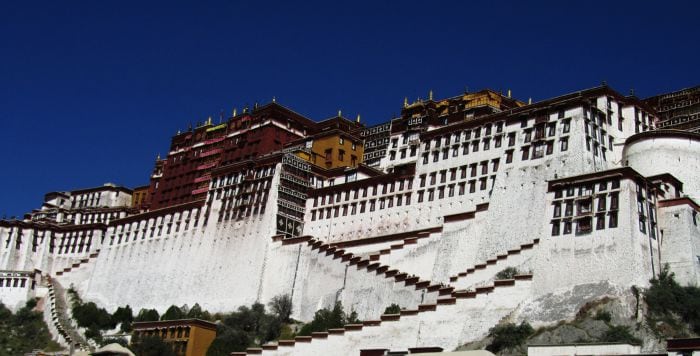
Things to know before you book your trip: Chinese Visa, Tibet Permit and Travel agencies
Get a chinese visa.
First of all, in order to reach Tibet you have to enter China, that is you need a Chinese Visa (unless you are already living in China). Getting a tourist Visa isn’t that difficult and I’ve already wrote a detailed guide on this topic .
I recommend you to don’t mention Tibet while you are applying for the Visa. Even if you are going there only for tourism, the political situation is difficult (yes, this is an euphemism) and the Visa officers may start to questioning you real goals (are you an activist or, worse, a journalist?). Keep it simple and avoid to talk too much.
Get a Tibet Entry Permit
Beside your Chinese Visa, you’ll need a TTB Permit (Tibet Tourism Bureau Permit or Tibet Entry Permit) to enter Tibet .
From time to time China decides to close Tibet to foreign visitors, so you may want to check whether the border to Tibet is open or not before to book your flight.
If the border is open the Tibet Entry Permit isn’t difficult to get. Actually the travel agency that will organize your trip will also take care of the permit. keep in mind that its cost should be included on the price of your tour.
Notice that without the permit you can’t even get on a plane or a train to Tibet (you’ll need it at the boarding time). If you are thinking to hire a car and go there by yourself, I suggest you to re-evaluate your options. There are military check point everywhere in Tibet and around its borders: they will stop you, discover that you have no permit and kick out of China as soon as possible (at your own expense).
So yeah, your only option is to book a private or group tour.
Some tips on choosing a travel agency
I’ve been to Tibet with a random Chinese travel agency I found in Beijing (I don’t even recall the name). It was slightly cheaper than booking with a more foreigner-friendly agency (that is an agency that has at least a website in English language and someone that speak English at the office) and I must say I got what I paid.
The overall organization was ok. However the hotels were terrible, the food was crap (we ended up eating several times at our expense to avoid the tour “official” restaurants) and the guide could barely speak English.
If you don’t live in China you’ll probably look for an agency on the web, so you’ll most luckily find someone that speak decent English. Before to book just make sure that:
- Tibet is open to foreign visitors on the days you are planning to travel there. Be aware that there will always be the risk that the authorities decide to close the border without any notice but it’s not that probable.
- Make sure that the agency you chose is able to get the Tibet Entry Permit on your behalf.
- Read the review of previous customers on the agency’s website (all decent agencies will provide some reviews). In-depth reviews that provide the name and photo of the customers are better than anonymous short review such as “ this trip was wonderful ” are more difficult to fake. Just use a bit of common sense.
- Make sure that you are dealing with a serious agency. For instance, let’s say that you ask to the travel agent whether you can travel by yourself within Tibet after they provide the Permit for you or not. If the agent answers “Yes, of course” then run away. He’s lying to you as his only goal is to secure a new customer. As I’ve already wrote, you can’t travel alone within Tibet. The most you can do is to wonder around Lhasa by yourself (but don’t try to enter to any temple on your own).
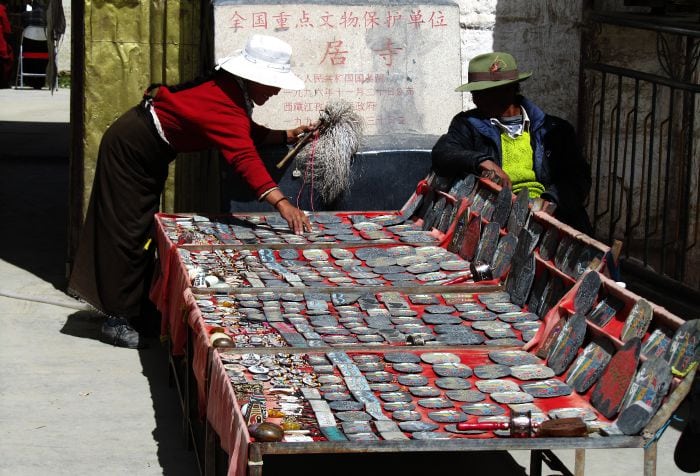
It’s difficult to answer to this question because it comes down to what you want. The best I can do is to highlight the different options that you’ll have. Generally speaking, you should plan a budget of at least 800 USD per person (the international flight is not included).
- Chinese Visa: the price depends on your nationality but it should be around 130 USD. Here you’ll find more details.
- Travel Insurance: a two weeks travel insurance with World Nomads costs about 70 USD (click on the link above to get a quote for more people if you aren’t traveling alone). I strongly suggest you to purchase a travel insurance as if you get sick in Tibet and you have no insurance you may end up spending more than what you can afford. It’s too risky.
- International flight: usually it’s not included on the travel agency’s fee. The prices may vary greatly according to the season and your departure city. Here you’ll find some tips on how to get the best deal.
- Internal flight or train: You’ll most luckily land in Beijing or Shanghai. From there you can choose to take a plane or a train to Lhasa, the capital of Tibet. The internal trip is usually included on the agency’s fee (make sure to double check it!). Most of agencies will offer you both options (plane or train). I will discuss the pros and cons of traveling by train in the next section, however keep in mind that traveling by train will be cheaper (you can expect a difference of at least 200 USD).
- Private or group tour: If you travel alone or with a friend (or partner) a group tour will be a bit cheaper. However if you are at least three people the price should be pretty much the same.
- The duration of the trip: I suggest at least ten days if you are planning to reach the Everest Base Camp or eight days if you just want to visit Lhasa, the Holy Lakes, Shigatse and a couple of Buddhist temples on the road. There is no point to go to Tibet and stay in Lhasa!
- The hotels: Most of agencies will offer you the possibility to choose the type of hotel you want to sleep in (from 2 to 5 stars). The price will vary according to your choice.
At the beginning of this section I claimed that you should plan a budget of at least 800 USD per person. Let’s break down this figure and add the international flight cost:
- Visa: 100-150 USD.
- Travel insurance: 70 USD.
- International flight: 800-1000 USD from U.S. and 600-800 USD from Europe if you want to come on summer and buy the ticket at least two months before your departure.
- All inclusive organized trip with a travel agency: 600-800 USD (assuming that you are choosing the cheapest option).
So yeah, you can’t expect to visit Tibet for less than 1,500 USD per person (unless you already live in Asia). Notice that I didn’t include any souvenirs, food or other extras (for instance a cowboy hat or a yak burger!).
Pros and cons of traveling to Tibet by train
While flying to Tibet from Shanghai or Beijing will take about four hours, getting there by train will take 45-50 hours. I went to Tibet by train and I don’t regret it as there are several advantages:
Altitude sickness: Even if Lhasa has an altitude of “only” 3,490 meters (11,450 ft) it doesn’t make sense to travel to Tibet and only visit the capital. You’ll want to visit at least the Holy Lakes and, maybe, the Everest Base Camp. This means that you’ll travel up to 5,300 meters. And, unless you are a Nepalese sherpa, you’ll get altitude sickness.
Don’t freak out, you’ll survive. The symptoms of altitude sickness are very similar to a bad hangover. However if you reach the Tibetan plateau gradually, that is by train, your body will have the time to adapt itself and you’ll be able to enjoy your trip much more (I’ve seen people getting really sick and even puking on the bus).
- Landscapes: The Qinghai-Tibet Railway is an amazing ride, especially while you are crossing Qinghai Province, a land of deserts and astonishing lakes (see the above video for more details). Also, you’ll be able to claim that you traveled along the highest railway in the world!
- Experience: Spend two night in a Chinese train is quite an experience. I’ve wrote a full guide on traveling by train in China so just click on link if you want to learn more about it.
- Price: The train is cheaper than the plane (at least 200 USD for a return trip).
Here the only cons that I could find:
- Time consuming: As I said, it takes about 45 hours for traveling by train from Beijing or Shanghai to Lhasa. What we did was to go by train (so that we enjoyed the landscapes and minimized the altitude sickness symptoms) and come back by plain (so we gained two days).
- No shower for two days .
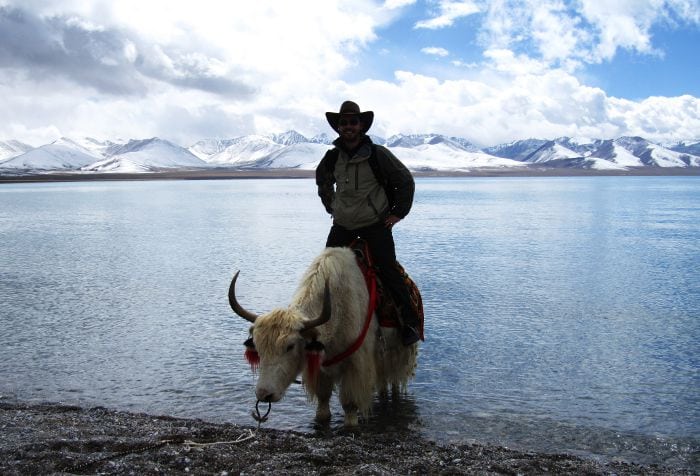
Planning your trip to Tibet
The best time to visit tibet.
I would say that the best time to visit Tibet is between the 15 September and the 15 October. It won’t be too cold neither too hot, the sky will be clean so you’ll have the possibility to enjoy the sun at 5,000 meters and see the Himalayan mountain range (aren’t coming to Tibet for it after all?)
Where to go?
This article is already quite long so I won’t go into details on what you can visit in Tibet and what are the top attractions in Tibet . However you can find more info on the most popular Tibetan destination by visiting the following pages:
- What do you expect from Lhasa, the capital of Tibet? .
- The Holy Lakes of Tibet (Photo Essays) .
- Your guide to visit the Everest Base Camp .
What to bring to Tibet
You don’t need any special equipment to travel around Tibet (unless you want to climb the Everest but in this case you are either crazy or already know what to bring!). Of course bring a winter jacket as it may be cold, especially at night, and sunglasses as the sun can be quite strong up to 5,000 meters.
If you have never been to China and are wondering whether you should bring anything special or not, you can read the complete list of what I carry with me when I travel around the Middle Kingdom.
General advices
- Avoid to take pics of the police or the military check points: you’ll risk to get your photo camera or smart phone seized. No kidding.
- Expect to see the worst bathrooms of your life, especially where you’re far from the main cities (Lhasa and Shigatse).
- Local people will often ask you some money to take photos of them or their animals. Usually you can get around with 10 RMB (less the 2 USD). You can also take photos with yaks (yes, I paid to take the photo on the yak that you can see on this article), huge Tibetan dogs and so on. In this case it may be more expensive (20 or 30 RMB).
- The food won’t be the best, especially if you choose a cheap organized trip. While you are in Lhasa, if you chose a cheap tour I suggest you to have dinner on your own and try at least a yak burger and the Tibetan yak dumplings. I won’t cost you more than a couple of USD and it’s not something you can experience elsewhere (unless you’re heading to Nepal after Tibet)
- The best way to reduce the altitude sickness is to drink a lot of water as the main cause is the de-hidratation of the brain (as for a bad hangover).
- Don’t believe medias, Tibet isn’t dangerous!
- The overall trip may be tiresome as you’ll spend a good chunk of your trip in a bus, moving within lakes, temples and glaciers. However I do think it’s well worth and I’m looking forward to go back to Tibet soon!
Other frequently asked questions
Neither Bhutan nor Tibet can be visited freely, so you will have to hire an organized tour. On the contrary, Nepal allows free entry without the need to hire any agency.
In conclusion…
I think now you know pretty much everything you need to plan your trip. People tend to think that traveling to Tibet is complicated. The reality is that China has amazing infrastructures and the travel agency will take care of all the technical details such as the Entry Permit or the internal trips. So you won’t need to work too hard on the organization.
Photo Credits: Photos by Sapore di Cina
About The Author
Sapore di Cina
Related posts.

The Stone Forest and the legend of Ashima

From Lijiang to Lugu Lake: Chronicle of a Hectic Trip

Gubeikou: Hiking on the Wild Great Wall
24 thoughts on “how to organize your trip to tibet as a foreigner”.
I have read your article and I’m impressed with your article and you give full information for Trip to Tibet. I am also written an article about the vacation in tibet .
hi – you said it’s good to go to Tibet at the end of September/start of October. Do you think Tibet is affected by the Chinese National Day holiday? Do many Chinese people travel there during that time?
All the country is affected so the answer is yes
Thanks for sharing this useful information. I found this article really helpful. SO please keep sharing you articles. thanks.
Thank you for visiting!
Wow, I was amazed by how detailed this post is! I am planning to go there with 3 of my friends so that might be a group tour for us. Thank you so much! =)
We are happy you’ll find it useful. You can contact us if you are searching for an agency
Thanks a lot for the guidance! It helps me alot arranging my trip to Tibet.
I think based on what u stated im convinced i get the right travel agent since they are really strict when i ask if i can go around tibet myself – when i get free time in between lunch hours/dinner time.. They said no we cant. I just wonder what do u think if i take november 11-19, is it bad the weather there?
November shall still be ok. I suggest you to also ask to your agency!
Hi, good to read all this, thanks for doing it.
We have one question, we check that is good idea to go in the train but to stop in some cities before arrive there, how to plan an excursion like that? we always do trips without tours so now that we must do… is our wondering.
we live near hangzhou, zhejiang province
Just ask to the agency of your choice if they can buy get a train ticket with long stopovers.
I read your article for tour to Tibet and got it very enlightening .Tibet ,Land of Himalayas, really stunning place to visit.
Ok, I was planning to visit Tibet alone for 6 months, and stay there hanging around, but it looks like it is imposible, unless you can give me some good advise, of course every tour would be done within an agency but along 6 month, the rest of the time nothing to do, just living there, can I rent a room or live in a monastery? Travel permit for 6 months are possible? Good advise is welcome. Thanks.
no, that’s not possible. I doubt they will give you a Tibet Permit longer than 20-30 days and you will have to hire an accredited guide for all the time you spend there
Hello there, I live in China and want to go to Tibet soon. I went to an agency in the city i live in and they told me they can sell me the permit to get into Tibet and without any tour as all its tours are for groups of Chinese people who are able to visit all the sightseeing I cannot as a foreign. They said, I can go with them, but I won’t be allowed to visit all the places Chinese will do in the tour. Which means, i can explore Tibet by myself, with the special permit, and without any tour. Do you think I can do it for sure? Thanks a lot in advance.
It looks like a scam. Foreigners aren’t allowed to explore Tibet by themselves. You’ll probably be stopped at the first military check point (there are a ton of them) and get kicked out of China ASAP. Get a tour, if you want to visit Tibet!
Hi Furious Fu Five of us have booked all our flight from Singapore to Xining to take the train there to Lhasa. Paid our deposit to a Tibetan agency ( very well rated by trip advisor) for arranging the trip within Tibet, all permit and to secure Xining to Lhasa train ticket. Now the agency informed that train ticket are secured but we will only know the train Nos and times of departure when we reach Xining as they obtained the soft sleeper berth through some “connection” Is this quite normal , we are very concerned that this might be a scam and worse getting ourselves stuck in Xining without train ticket. hope you can comments, Thanks
Hello, this makes nosense to me! Ticket are available 20 days before departure and all details (departure time and seat number) shall be on the ticket. Can’t confirm it’s a scam or not but it doesn’t look so serious to me.
Hi man, I need a few extra info about Tibet, if you don’t mind. First of all, do you confirm that you HAVE TO book a tour through an agency to go around? I knew this was true but then I was just having a look at the Lonely Planet website and they talk about the possibility of traveling independently… Second, is it possible to book the tour at the moment you arrive in Lhasa? Or is it advisable to book the tour in advance? Also, do you need a permit to get to Lhasa or do you do everything once you’ll get there (sorry but I didn’t really get this). Thanks mate!!
Hi Laura, as far as I know there’s no way to go to Tibet without travel agency (unless you have Chinese nationality). The only way to be allowed to go to Tibet is with a Tibet Entry Permit and only the travel agencies can get it, this means that you can’t take any plane or train direction Lhasa without the Permit and therefore a tour arranged
salve Maestro ,
Just to tell you : Bravissimo ! Your blog Is just Awesome ! Just perfect ! You are the best ! Just arrived in Shanghai your blog is my Bible ! Just left Thailland where I was working in Phuket Te engracie , molto gentil Tanto bacci Coco Funny I just stay to Kevin ‘s old house up of Bella Napoli :) Coco
haha thanks coco
Leave a Comment Cancel Reply
Your email address will not be published. Required fields are marked *
Save my name, email, and website in this browser for the next time I comment.
Privacy Overview
Get 3 Months FREE with EXPRESS VPN
+ Best VPN For China + 30-Day Money-Back Guarantee + 24/7 Live China Customer Support + 3 Months Free on 12 Months Package

The Ultimate Guide on How to Visit Tibet [Updated 2024]
Embarking on a Tibet travel adventure is a journey of a thousand miles, an experience unlike any other. Travelers to Tibet can immerse themselves in the rich and vibrant Tibetan culture by exploring the colorful monasteries, attending traditional festivals, and interacting with the friendly locals. From the unique architecture of the Potala Palace in Lhasa to the traditional Tibetan homes in the countryside, visitors can witness the region's rich history and cultural heritage. In addition, Tibet offers a great overland travel experience . Travelers can embark on a thrilling journey across the vast Tibetan Plateau, driving through winding mountain roads and high-altitude passes, and witnessing breathtaking landscapes along the way. The famous Friendship Highway , which connects Lhasa to Kathmandu , is one of the most popular overland routes in Tibet, offering travelers a unique opportunity to experience the region's natural beauty, including a visit to Mount Everest Base Camp (north face) . For trekking enthusiasts, with its stunning landscapes, dramatic mountain ranges, ancient monasteries and hospitable nomad families, Tibet is an ideal destination for trekking. One of the most popular ones is Ganden Samye trek . Overall, Tibet is a destination that offers a truly unforgettable adventure.
Is Tibet open for international tourists in 2024?
Yes, you can travel to Tibet in 2024. Tibet has officially reopened its borders to international travelers on April 7th 2023, including the Gyirong border between Tibet and Nepal. This is a wonderful opportunity for overseas visitors to explore the enchanting land of Tibet. Our updated ‘Ultimate Guide on How to Visit Tibet’ is packed with essential information to help anyone planning their Tibet adventure in the upcoming months. Contact us for your Tibet tour planning today!

If you're interested in visiting Tibet, you'll need to learn more about this incredible Tibetan Plateau and consider some crucial factors before embarking on your journey. This Ultimate Tibet travel guide aims to provide you Everything You Need to Know about Your Travel to Tibet:
Table of Contents
- Brief Tibet Introduction
- Independent Tibet travel not permitted for international tourists
Tibet Travel Permit
- Other Tibet Permits and Travel Documents
Best time to visit Tibet
- Get to Tibet from China: by air, by train or by road
- How to travel from Nepal to Tibet
- Tibet tourist Map
- How many days do you need to visit Tibet
Top things to do in Lhasa
- Lake Namtso & Yamdrok Tso Lake
- Yarlung Valley in Central Tibet
- Overland Travel from Lhasa to Kathmandu
- Mount Kailash & Far Western Tibet
- Tibet Mount Everest Base Camp
- Top 3 popular Tibet Trekking Tours
- Other popular Tibet Trekking routes in Tibet
Insider Tips for Trekking in Tibet
- Visiting Tibet during Festivals
- Tips on how to reduce the risk of Altitude Sickness in Tibet
- Who should not travel to Tibet
- How is the accommodation in Tibet
What to eat and drink in your Tibet Tour
How much does it cost to travel to tibet.
- What to pack for your Tibet Travel
- Currency in Tibet
Shopping in Tibet
- Internet Access and Wifi in Tibet
- Things to Do and Not to Do When Visiting Tibet
- Download your Tibet travel checklist
A Brief Tibet Introduction
Tibet is an autonomous region situated on the Tibetan Plateau, often called the 'Roof of the World'. Located in the Himalayas in western China, Tibet has an average elevation of over 4,500 meters (14,764 feet), making it the highest plateau in the world. The highest point in Tibet is the world-famous Mount Everest, with an elevation of 8,848 meters (29,029 feet) above sea level.
Lhasa, the capital city of Tibet, is located at an elevation of 3,650 meters (11,975 feet) above sea level and is renowned for its distinctive culture, spiritual practices, and breathtaking natural beauty. Tibet is home to around 3 million people, with the majority belonging to the ethnic Tibetan community.
Tibet shares its borders with various regions and countries. Nepal lies to the south of Tibet, and it shares a long boundary with the Tibet. Visitors can access Tibet from Nepal, and many of them choose traveling by land to explore popular attractions like Mount Everest and Mount Kailash. Additionally, flights from Kathmandu to Lhasa are available, offering a convenient and faster means of transportation to reach Tibet's capital city.
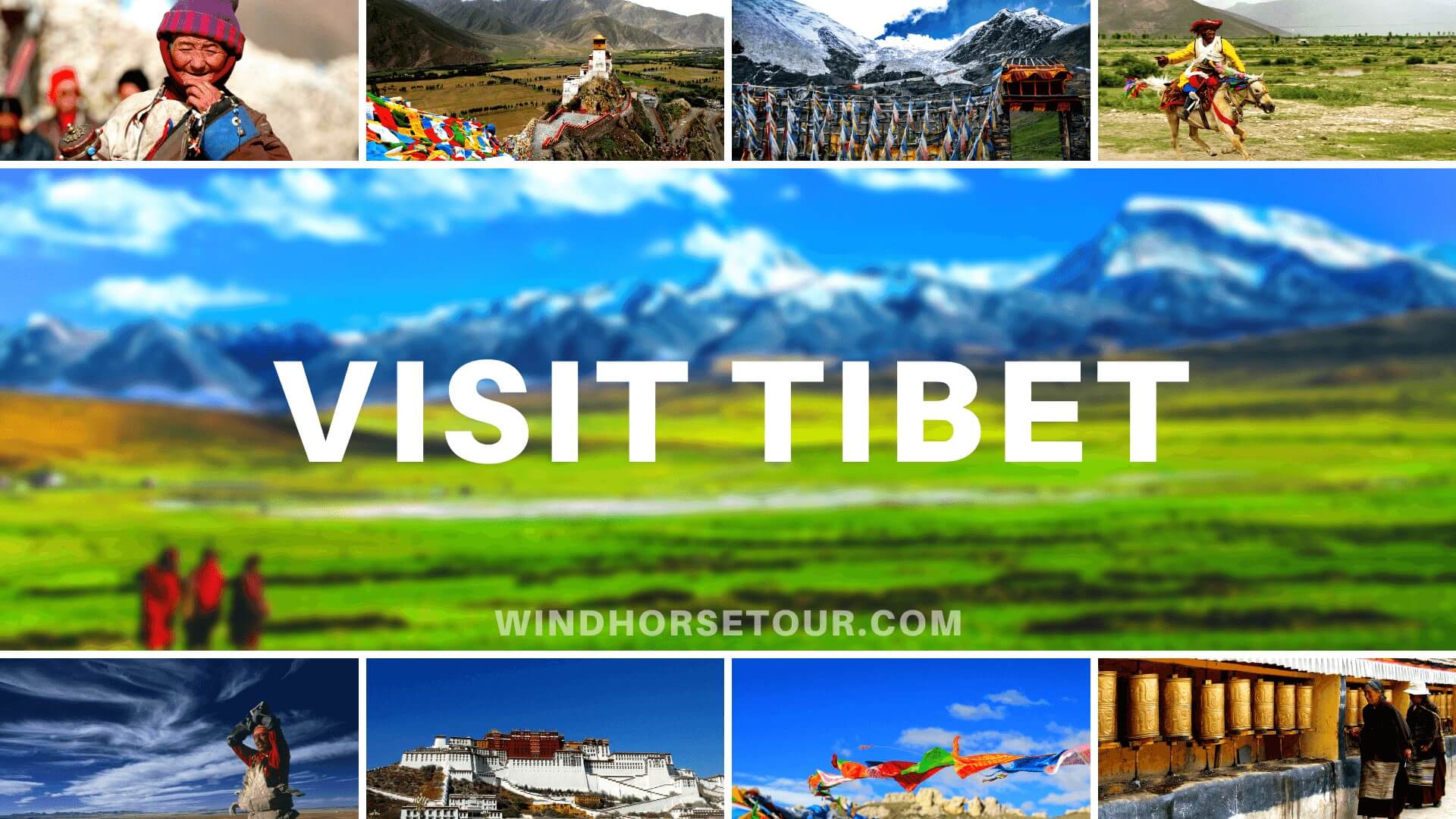
To the east of Tibet is the Chinese province of Sichuan, which has a large Tibetan population. Several roads connect Tibet with Sichuan, including the famous Sichuan-Tibet Highway.
To the northeast of Tibet is the Chinese province of Qinghai, which also has a significant Tibetan population. The Qinghai-Tibet Railway connects Lhasa with the Qinghai-Tibet Plateau and is one of the highest railway lines in the world.
To the southeast of Tibet is the Chinese province of Yunnan, which also has a small Tibetan population. There are several roads that connect Tibet with Yunnan, including the famous Yunnan-Tibet Highway.
Tibet is famous for its breathtaking landscapes, including Mount Everest, Mount Kailash, the Potala Palace, and numerous Buddhist monasteries and temples. Tibetan Buddhism is the predominant religion in Tibet, and it is deeply intertwined with Tibetan culture and history. The Tibetan language is also unique and complex, belonging to the Tibeto-Burman language family.
The region's economy is mainly based on agriculture and tourism. Despite its challenges, Tibet remains a popular destination for adventure travelers and those interested in Tibetan culture and history. When traveling in Tibet, proper acclimatization is essential to prevent altitude sickness, and visitors should also be aware of the travel restrictions and regulations that are in place. Visiting Tibet with a local guide can provide insight into Tibetan culture and traditions.
Independent Tibet Travel is not Permitted for International Tourists
Unlike most travel destinations, independent travel is not allowed in Tibet (referring to T.A.R) for foreign passport holders according to the Tibet travel regulations. Therefore, travelers cannot visit Tibet on their own and must be accompanied by a licensed tour guide during their visit. To comply with these regulations, travelers must book their tour in advance through a licensed travel agency, which will help them arrange the required Tibet permit and China group visa (if entering Tibet from Nepal) in advance. Throughout their trip in Tibet, a licensed guide will accompany them.
A Tibet tour with a private guide and vehicle can be expensive, especially for solo travelers or small groups looking for a more in-depth tour. In such cases, travelers can opt for organized Tibet group tours to make the cost more affordable. Regardless of the tour option chosen, it's crucial to follow the travel regulations in Tibet to ensure a safe and enjoyable trip.
Tibet Permit and Chinese Visa
Chinese visa.
When planning a trip to Tibet, it's important to have a valid Chinese visa since Tibet is part of China. If you plan to enter Tibet from mainland China, you'll need to apply for an individual Chinese tourist visa in your home country. To assist with the visa application process, our travel agency can provide you with a China travel Invitation Letter. Once you have your Chinese visa, you'll need to send a scanned copy of it along with your passport data page to your travel agency, which will then apply for the Tibet Permit on your behalf.
However, if you plan to travel to Tibet via Nepal, you don't need to obtain a Chinese visa in advance. Instead, your travel agency will help you apply for a Group China visa at the Chinese embassy in Kathmandu with your original passport upon your arrival in Kathmandu. This process usually takes 3-5 working days, and it is important to plan a few days in Nepal to accommodate this visa application process before heading to Tibet.
It is worth noting that China started to offer short visa-free policies to certain countries post-pandemic, aiming to boost tourism and simplify entry for business travelers and tourists on brief stays. China's 15-30 day visa-free policy allows eligible travelers from select countries, including 11 in Europe and Malaysia, to enter and stay in China without a visa for up to 15 days, and up to 30 days for travelers from Singapore and Thailand.

The Tibet Travel Permit also called TTB permit is the most important document needed before entering Tibet. Without it, foreign tourists are not permitted to enter Tibet. It's essential to have the original one if you take the flight into Tibet or land travel to Tibet, a copy could work if you enter Tibet by train.
The Tibet Travel Permit is issued by the Tibet Tourism Bureau (TTB) and is required for all foreign travelers and Taiwaness. Journalists, diplomats, and individual professional media photographers must apply through the diplomatic channels of their countries or the company they represent.
The Tibet Travel Permit is a two-page document, with the first page featuring the 'permit' that includes the tibet tour operator agency name that the traveler has booked a trip with. Additionally, this page contains the tour code, traveling dates, the travel destinations and the entering/exiting places of the traveler's trip to Tibet.
The second page of the Tibet Travel Permit is a 'Name List' for the group, which includes the name, passport number, nationality, age, and profession of each traveler. It's crucial to ensure that the information on the Tibet permit is accurate and matches the information on your passport. Any discrepancies could result in delays or denial of entry into Tibet.
The process of applying for the Tibet Travel Permit usually takes about 10-14 days. However, if you plan to travel to remote areas of Tibet, such as Mount Kailash, or do overland travel from Sichuan/Yunnan to Tibet, the permit application process can take up to 3 weeks. It's essential to plan your trip accordingly and apply for the permit well in advance to avoid any last-minute complications. The cost of the Tibet Permits is usually included in your tour price.
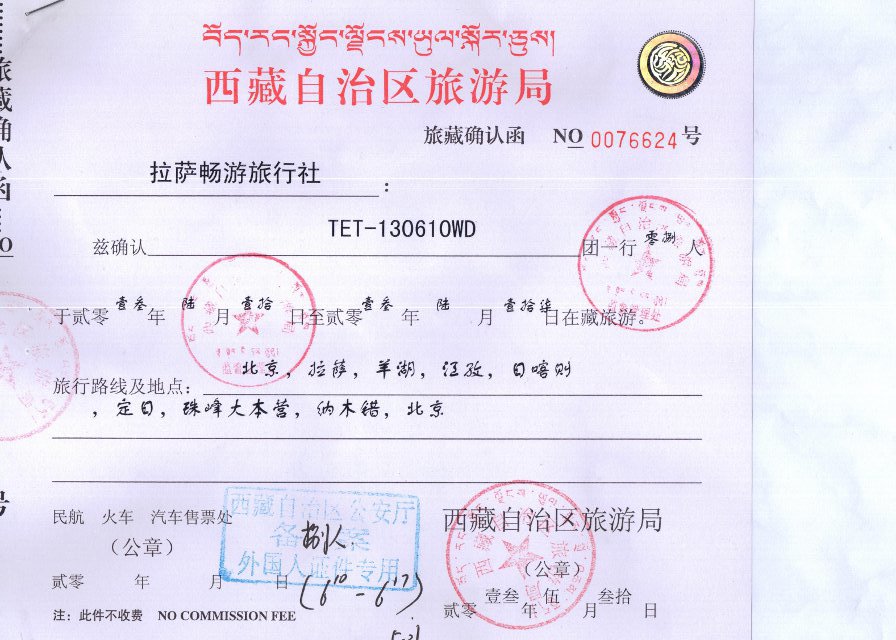
Other Tibet Permits and Travel Documents
When planning a trip to Tibet, be aware that certain places and attractions may require additional permits. In addition to the Tibet Travel Permit, you may need a Tibet PSB permit, Military Area Entry Permit, and/or Foreign Affairs Permit.
To visit 'unopened' areas in Tibet, such as Mount Everest Base Camp, Mount Kailash, some monasteries in Tsedang, and the regions of Nyingchi, Chamdo, and Nyinghci, you will need an Aliens' Travel Permit, also known as the PSB permit. Your guide will help you apply for this permit upon arrival in Lhasa, which usually takes a few hours.
Visitors planning to travel to military-sensitive areas in Tibet, such as Mount Kailash in Ngari or Rowok Lake in Chamdo, require a Military Area Entry Permit. Moreover, certain border areas, such as Mount Kailash and far-western Tibet, require both a Military Area Entry Permit and a Foreign Affairs Permit. The Military Area Entry Permit is issued by the military affairs office, while the Foreign Affairs Permit is issued by the Foreign Affairs office in Lhasa. To visit Tholing and Tsaparang in western Tibet, you'll need a permit from the local Cultural Antiquities Department. The application for these permits can take up to 10-15 working days, normally your travel agency will submit your permit application about one month before your scheduled arrival in Tibet.
Additional Tips:
- Residents of Hong Kong or Macau do not need a Tibet Travel Permit to travel to Tibet. They can travel to Tibet using their HK/Macau SAR Passport and Home Return Permit.
- Indian nationals planning to visit Mount Kailash, Manasarovar, or other parts of Ngari in western Tibet must book their tour through a registered Nepali or Indian travel agency that has cooperation with the Foreign Affairs Office of the Tibet Autonomous Region (TAR) or the Tibet-India Pilgrim Reception Center. For Indian passport holders who wish to visit other parts of Tibet, they can book a tour with any registered travel agency, who will apply for the necessary permits on their behalf.
- Taiwanese who plan to visit Tibet must obtain both a Tibet Travel Permit and a Mainland Travel Permit for Taiwan Residents (MTP).
Tibet's climate is heavily influenced by its high altitude and position on the Tibetan Plateau, so planning your Tibet tour accordingly is crucial.

The best time to visit Tibet is generally from May to October when the weather is mild and pleasant, and the skies are clear, making it ideal for trekking and enjoying stunning vistas. However, the peak summer months of July and August can be crowded with tourists, and prices for accommodations and transportation will increase. July and August are also the monsoon season, it can bring heavy rainfall and potential road closures, making overland travel and trekking challenging.
During the winter months from November to February, Tibet can get extremely cold, with temperatures dropping to well below freezing. While some attractions in Far West may not be accessible, Lhasa and central Tibet offer a unique cultural experience, with nomad families shopping and worshiping at monasteries. Additionally, the cost of Tibet tours is significantly lower during the winter months due to fewer tourists.

Here is some additional information regarding the best time to visit specific regions and attractions in Tibet:
- Lhasa and Central Tibet: The best time to visit Lhasa and Central Tibet is from April to October when the weather is generally mild and dry. This period also coincides with many festivals and events, providing a unique opportunity to experience Tibetan culture and traditions. However, it's also worth considering a winter Tibet tour as it can offer a unique cultural experience. During the winter months, many nomad families came to Lhasa for shopping and visiting monasteries to worship, and the lack of tourists can provide a more authentic and immersive experience.
- Mount Everest Base Camp: The best time to visit Mount Everest Base Camp is from April to May and September to November when the weather is generally dry and stable. During these months, the skies are clear, and the views of the mountain are breathtaking. It is also the expedition season for climbers attempting to summit Mount Everest.
- Tibet Nepal Friendship Highway: The best time to do the overland travel along this Highway is from April to June and September to November when the weather is mild and dry, and the road conditions are relatively stable. July and August are the rainy months, and the roads can be more challenging to navigate due to potential landslides. In the winter months, from December to March, the roads along the Tibet Nepal Highway can be closed due to heavy snowfall and icy conditions.
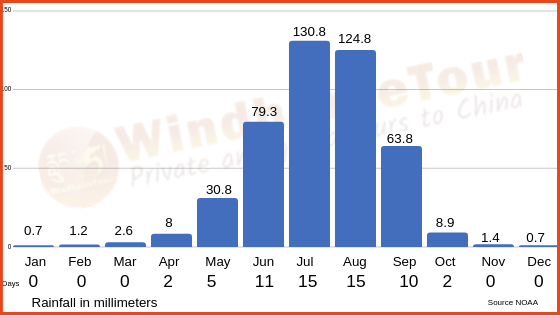
- Mount Kailash and Far West Tibet: The best time to visit Mount Kailash is from May to October when the weather is relatively mild and dry, and the roads leading to the mountain are open. The Saga Dawa Festival is held around June/July and is a major attraction for visitors. It's important to note weather can be unpredictable at Mount Kailash, with sudden changes in temperature, especially at higher elevations like the Droma-la pass during the Kailash Kora, snowfall can occur in the middle of summer.
- Trekking in Tibet: The best time for trekking in Tibet is from late April to early October when the weather is mild and dry. However, during the monsoon season in July and August, heavy rainfall and significant temperature drops can occur, particularly in the evening. Therefore, it's essential to have warm clothing and suitable gear to ensure a comfortable and safe trekking experience.

Overland travel from Sichuan/Yunan to Tibet: The best time for overland travel from Sichuan or Yunnan to Tibet is from April to November, when the weather is usually mild and dry. However, during July and August, the region experiences monsoon season with heavy rainfall and potential road closures. It's important to be aware of this and prepared for unexpected changes, such as delayed or cancelled trips due to weather-related issues.

How to get to Tibet
When planning a trip to Tibet, travelers often ask two common questions: 'How do I get to Tibet?' and 'What is the easiest way to get to Tibet?' With its remote location and unique terrain, getting to Tibet can be a challenging task. Therefore, it is essential to understand the different transportation options and entry points available to make an informed decision and plan your itinerary accordingly. For first-time visitors who may be unfamiliar with the Tibet's geography and transportation infrastructure, knowing the easiest way to get to Tibet can be particularly helpful.
How to get to Tibet from China
If you're planning a trip to Tibet, entering through mainland China is the most common and convenient gateway. With multiple transportation options available, you can easily get to Tibet by air, train, or road .

Getting to Tibet by air: Major cities in mainland China offer direct flights to Lhasa, making it a popular and convenient option for travelers. Chengdu is a popular entry point for tourists, thanks to its frequent daily flights to Lhasa and Nyingchi, which provide a quick and easy connection to Tibet. Additionally, other major Chinese cities, such as Beijing, Xi'an, Shanghai, Chongqing, and Guangzhou, also offer direct flights to Lhasa.
These flights generally take between 2 to 6 hours, depending on the departure city. Flying to Tibet can save time compared to traveling by train, but it's essential to keep in mind that the sudden change in altitude upon arrival may increase the risk of altitude sickness for some travelers. It's a good idea to allow some time for acclimatization once you reach Lhasa, especially if you're prone to altitude sickness or have never been to high-altitude destinations before.

Getting to Tibet by train: The Qinghai-Tibet Railway, running from Xining to Lhasa, is the sole railway connection to Tibet. As the world's highest railway, the Tibet train reaches altitudes exceeding 5,000 meters (16,400 feet) above sea level. This train journey provides travelers with a unique opportunity to observe some of the most breathtaking landscapes, including snow-capped mountains, vast plains, and the awe-inspiring Tanggula Pass. The train is equipped with a specially designed oxygen supply system and large windows, ensuring a comfortable journey as you ascend into the thin air of the Tibetan Plateau.
The train from Xining to Lhasa covers a distance of approximately 1,972 kilometers (1,225 miles), and the journey takes around 21 to 24 hours. In addition to Xining, there are direct trains to Tibet from other major Chinese cities such as Beijing, Shanghai, Guangzhou, Chengdu, Chongqing, and Lanzhou. These trains all pass through Xining, and their journeys take longer hours due to the additional distance from their starting points.
Accommodation options on the Tibet trains include hard seats, hard sleeper cabins, and soft sleeper cabins, catering to different preferences and budgets. Throughout the journey, passengers can also purchase meals and snacks from the train's dining car.
- Hard seats: they are the most affordable option but may be less comfortable for long journeys.
- Hard sleepers: They provide a more comfortable experience with bunk beds arranged in tiers. Each cabin typically has six berths, with no door for added privacy. This option is budget-friendly while still allowing passengers to rest during the journey.
- Soft sleepers: They are the most comfortable and luxurious option, featuring four berths per cabin with a lockable door for increased privacy.
Traveling from Xining to Lhasa by train is not only an unforgettable experience, but it also allows passengers to gradually adjust to the high altitude, minimizing the risk of altitude sickness.
Insider tips:
- Train tickets are usually sold about 30 days before the train's departure date.
- During the peak tourist season (July to early October), train tickets to Tibet will be in high demand. It's highly recommended to book the tickets through the same travel agency that you book your tour with.

Getting to Tibet by road: Road travel to Tibet is also an option, with four major highways leading to Lhasa, including the Sichuan-Tibet Highway (G318 and G317), Qinghai-Tibet Highway (G109), Yunnan-Tibet Highway (G214), and Xinjiang-Tibet Highway (G219). Although the overland journey can take longer, ranging from a few days to over a week depending on the route and stops, it offers breathtaking scenery and an unforgettable experience.
The Sichuan-Tibet Highway and Yunnan-Tibet Highway are particularly popular for their stunning landscapes and rich cultural experiences. The Sichuan-Tibet Highway stretches over 2,142 kilometers (1,330 miles) and takes you through diverse ecosystems, from lush forests to snow-capped mountains, while offering opportunities to visit important Tibetan monasteries and historical sites.
The Yunnan-Tibet Highway, also known as the 'Southern Silk Road', spans approximately 2,250 kilometers (1,400 miles) and connects the Yunnan Province with the Tibetan Plateau. This route allows travelers to explore the ancient Tea Horse Road, enjoy the breathtaking views of the Meili Snow Mountain and the Great Bend of the Jinsha River.
Traveling by road allows you to witness diverse landscapes, pass through numerous ethnic villages, and visit fascinating cultural sites along the way. It's a great way to immerse yourself in the region's rich history, culture, and natural beauty. However, road conditions can be challenging, and some sections may be impassable during the rainy season or due to landslides.
For those considering this option, it's essential to be well-prepared and arrange your trip with a reliable tibet travel agency . They can help you with the necessary permits, transportation, and accommodations, ensuring a safe and enjoyable journey to Tibet. Remember to allocate enough time for acclimatization and rest during your overland adventure, as you'll be traveling through high-altitude areas.

How to Travel from Nepal to Tibet
Traveling from Nepal to Tibet is another popular choice among adventure-seekers and offers a unique experience through the breathtaking Himalayan region. There are two main ways to get to Tibet from Nepal: by air and by road.
- Get to Tibet by plane from Nepal: Flying from Nepal to Tibet is the fastest and most convenient option. Direct flights are available from Kathmandu in Nepal to Lhasa in Tibet. The flight duration is approximately 1.5 hours, and current flights are operated by Himalaya Airlines. During the tourism season from April to October, there are about 3 fights per week (Mon. Wed. and Fri.) operated to accommodate the increased demand from travelers. Be sure to book your flights in advance to secure a seat during this popular travel period.
- Get to Tibet by road from Nepal: The overland journey from Nepal to Tibet is a more adventurous and scenic alternative, allowing travelers to witness the stunning landscapes of the Himalayas up close. The overland travel from Kathmandu to Lhasa via Gyirong border takes about 4 to 5 days, you will travel most of the time along the Tibet Nepal Friendship Highway including stops at Tibet Mount Everest Base Camp, the 2nd largest city - Shigatse and the ancient town Gyantse, etc. For adventure seekers, another popular route is the overland journey from Kathmandu to Mount Kailash. This pilgrimage route not only offers a unique and spiritually enriching experience but also breathtaking views in the far west of Tibet, including vast grasslands, snow-capped mountains, nomadic groups, and an abundance of wildlife.
Insider Tip when you travel from Nepal to Tibet:
- If you travel to Tibet from Nepal, you don't need to arrange Chinese visa in advance but the travel agency that you book the tour with will assist you to get the China Group Visa in Kathmandu at your arrival. Please leave yourself 4-5 days in Kathmandu for this visa process before boarding on the road. However, if you're a foreign citizen eligible for visa-free travel to China , you don't need to apply for a Group China visa in Kathmandu.
Tourist Map with attraction locations.
Below on this Tibet map, you can see where the main attractions in Tibet are located. These attractions are the most frequently chosen by tourists.

How many days do you need to visit Tibet?
The number of days you need to visit Tibet depends on your interests, the places you want to visit, and the time you have available. Here is a rough idea of how many days you need for your Tibet tour:
- If you're only visiting Lhasa and nearby attractions, then 4-5 days will be enough . This includes the arrival and departure days, as well as 2-3 full days to explore Lhasa city highlights, and possibly a day excursion to a nearby attraction such as Yamdrok Tso Lake or Ganden Monastery.
- If you plan to travel beyond Lhasa , but within Central Tibet , then consider a 6-10 day tour . This will give you time to visit places like Gyantse, Shigatse, and Yarlung Valley, and maybe head to Namtso Lake beyond Lhasa highlights.
- For a trip that includes Tibet Everest Base Camp or travel further to Kathmandu in Nepal, you'll need 8-10 days . This includes the Lhasa city visit and acclimatization before you head for the overland travel.
- To visit Mount Kailash and Lake Manasarovar , you should plan a trip of 12-15 days . To travel further to Zanda Guge Kingdom ruins and cross the wilderness of Changthang Plateau, you'll need to plan a trip of 16-22 days.
Top Things to Do in Tibet
Tibet is an extraordinary destination, boasting a unique blend of natural wonders, rich cultural heritage, and vibrant traditions. Regardless of the type of tour you choose, your trip to Tibet promises to be an unforgettable experience. The region offers a wealth of attractions for tourists to discover. We've compiled a list of the must-visit attractions in Tibet for every traveler to explore during their journey. To further enhance your experience, consider choosing from a diverse selection of over 60 expertly crafted Tibet Tours , designed by our professional travel advisors to accommodate various travel preferences.

Lhasa, the capital of the Tibet Autonomous Region in China, is situated at an altitude of 3,650 meters (11,975 feet) above sea level, making it one of the highest cities in the world. As a significant hub for Tibetan Buddhism and the political, economic, and cultural center of Tibet, Lhasa draws travelers from around the globe with its rich heritage and breathtaking landscapes.
The city is home to several important and sacred Buddhist sites, including the Potala Palace, Jokhang Temple, and the "Great Three" Gelug monasteries – Drepung, Sera, and Ganden. Barkhor Street, a vibrant area encircling Jokhang Temple, offers a glimpse into the daily lives of Tibetans and serves as an excellent place to shop for traditional crafts and souvenirs.
For those looking to explore Tibet, Lhasa serves as the perfect starting point, providing easy access to the region's diverse attractions and experiences. Must-visit attractions in Lhasa include:
Potala Palace - A World Heritage Site
Potala Palace, one of the most renowned spiritual sites in the world, boasts a rich history spanning over 1,300 years. Originally constructed by the Tibetan King Songtsen Gampo as a symbol of love for his bride, Princess Wencheng of the Chinese Tang Dynasty, the palace later served as the winter residence for the Dalai Lama. Today, Potala Palace functions as a museum, preserving and showcasing Tibet's fascinating cultural heritage.
The palace comprises more than a thousand rooms, and within its walls, visitors can discover a vast collection of painted scrolls, over 650 exquisite murals, and thousands of intricate statues adorned with precious jewels. These magnificent displays serve as a testament to Tibet's artistic and spiritual legacy.
The Potala Palace was listed as a World Heritage site by UNESCO in 1994.
Visitors have an hour to explore the captivating interior and experience its uniqueness. To maintain the palace's sanctity and preservation, photography is not permitted inside.

Jokhang Temple and Barkhor Street
Jokhang Temple, considered the holiest temple in Tibet, boasts a rich history that stretches over 1,000 years. Built during the Tubo Dynasty, the temple is a unique architectural masterpiece, showcasing an intricate fusion of Chinese, Tibetan, and Nepalese styles.
Situated on Barkhor Street in the heart of Lhasa's old town, Jokhang Temple serves as an ideal starting point for leisurely walks and cultural exploration. As you stroll through the bustling streets - Barkhor Street, you can immerse yourself in the vibrant local Tibetan culture, witness the devotion of pilgrims, and appreciate the rich heritage of the area.
Jokhang Temple was included on UNESCO's World Heritage list as part of the Potala Palace in 2000.

Norbulingka Summer Palace
Norbulingka, which means 'Jewel Park' in Tibetan, was built in the 18th century by the seventh Dalai Lama, Kelsang Gyatso, and was used as a summer residence by successive Dalai Lamas.
Norbulingka is a UNESCO World Heritage Site, covering 36 hectares with buildings, pavilions, lakes, and stunning gardens divided into four sections representing different regions of Tibet. The palace also houses precious Tibetan cultural relics such as the Dalai Lama's throne room, murals, paintings, and Tangkas.
Today, Norbulingka serves as a museum, showcasing Tibetan history and culture to visitors. It is also used for the Tibetan Shoton Festival, which includes an opera festival as one of its main events.

'Great Three' Gelugpa Monasteries in Lhasa - Sera Monastery, Drepung Monastery, and Ganden Monastery.
These monasteries play a significant role in Tibetan Buddhism and are known for their rich history, architectural splendor, and cultural significance.
- Sera Monastery: Founded in 1419 by Jamchen Chojey, a disciple of Tsongkhapa, Sera Monastery is renowned for its lively monk debates held in the afternoons. These debates offer visitors a unique opportunity to gain insight into Tibetan Buddhist education and practice.
- Drepung Monastery : Established in 1416 by Jamyang Choge Tashi Palden, another disciple of Tsongkhapa, Drepung Monastery was once one of the largest monasteries in the world, housing thousands of monks. Visitors can explore its remarkable architecture, historical artifacts, and the Ganden Palace, which served as the Dalai Lama's residence before Potala Palace was constructed. Drepung Monastery is also famous for the annual Shoton Festival, which features the unveiling of a giant thangka painting of Buddha.
- Ganden Monastery: Founded by Tsongkhapa himself in 1409, Ganden Monastery holds a special place in the Gelugpa tradition. Located about 45 kilometers (28 miles) from Lhasa, the monastery offers stunning views of the surrounding valleys. It is an important pilgrimage site for Tibetan Buddhists, as it houses Tsongkhapa's preserved body and various sacred relics.
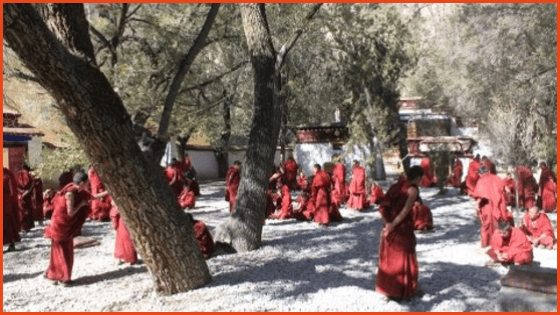
Drak Yerpa Monastery
For a unique and tranquil experience, consider taking a day trip to Drak Yerpa Monastery, a revered meditation site located approximately 16 kilometers (10 miles) northeast of Lhasa. The complex consists of ancient meditation caves that have been used by several important Tibetan Buddhist figures over the centuries. As you explore the caves and monastery, you can enjoy breathtaking views of the surrounding valleys and immerse yourself in the peaceful atmosphere, perfect for contemplation and reflection.


Two largest sacred lakes near Lhasa: Namtso & Yamdrok tso Lake
In Central Tibet, there are two significant holy lakes revered by both Buddhists and the local people for their spiritual significance and natural beauty. These lakes are Lake Namtso and Yamdrok Lake .
Namtso Lake - The highest saltwater lake in the world Namtso Lake, also known as Heavenly Lake, is the largest lake in Tibet and the highest saltwater lake in the world at 4,718 meters above sea level. It covers an area of 1,940 square kilometers.
Visitors to Namtso Lake are captivated by the breathtaking views of the snow-covered mountains, the turquoise water, and the stunning sunrises and sunsets.
The best time to visit Namtso Lake is between June and September, when the weather is most favorable. From December to March, the road to the lake is typically closed due to heavy snowfall, making it inaccessible during these months.
Namtso Lake is about 250 kilometers away from Lhasa. The travel time is around 4 to 5 hours by car, depending on road conditions and traffic. You can travel to Namtso Lake in one day or make it a 2-day tour if you plan to have a more relaxing trip and enjoy the stunning sunset and sunrise at the lake. A visit to a nomad family in their tent home along the way should not be missed in summer. This unique experience offers a rare glimpse into the daily lives and traditions of Tibetan nomads.
Our 5 day Lhasa highlights with Namtso Lake tour will offer you an enjoyable way to see Lhasa's highlights and one day travel to Namtso Lake.

Yamdrok Tso Lake - A Breathtaking Turquoise Freshwater Holy Lake Near Lhasa
Yamdrok Tso Lake, also known as Yamdrok Yumtso, is a breathtakingly beautiful and sacred freshwater lake situated about 110 kilometers southwest of Lhasa. It is the most visited holy lake by tourists and remains accessible throughout the year. The lake covers an area of 638 square kilometers and is nestled at an altitude of approximately 4,441 meters above sea level. With its stunning turquoise hue, Yamdrok Tso takes the shape of a coiling scorpion and is surrounded by picturesque snow-capped mountains.
In Tibetan Buddhism, Yamdrok Tso Lake is believed to be a sacred dwelling place of wrathful deities who protect Tibet and its people. Pilgrims often make a kora, or a circumambulation, around the lake, which is believed to bring good karma and purify one's sins.
A day tour to Yamdrok Tso Lake can also include a short detour to visit Samding Monastery, located near the lake. Samding Monastery is believed to be the only monastery in Tibet headed by a female reincarnation. The monastery is perched on a hill overlooking the lake and offers stunning views of the surrounding mountains. Our 5 days Lhasa - Yamdrok Lake tour (local family visit) will offer you 2 days to see Lhasa's highlights and a day travel to Yamdro Tso Lake and visit a local family at the lake side.

Yarlung Valley in Central Tibet - the cradle of Tibetan civilization
Yarlung Valley is often referred to as the cradle of Tibetan civilization, as it is believed to be the birthplace of the Tibetan people and the site of their earliest settlements. Located about 170km away from Lhasa, this region is indeed a must-visit for anyone seeking a deeper understanding of Tibet's rich heritage and Buddhism. The valley also offers breathtaking landscapes, with lush agricultural fields, traditional villages, and the mighty Yarlung Tsangpo River. The major attractions in the Yarlung Valley include:
- Yumbulagang Palace: Believed to be the first palace built in Tibet, Yumbulagang Palace is perched on a hilltop overlooking the Yarlung Valley. According to legend, it was constructed for the first Tibetan king, Nyatri Tsenpo, in the 2nd century BCE. The palace was later transformed into a monastery and houses beautiful murals depicting the history of Tibet.
- Trandruk Monastery: One of the earliest Buddhist monasteries in Tibet, Trandruk Monastery, dates back to the 7th century. It is famous for its stunning thangka, a sacred Buddhist artwork made with pearls, which depicts the image of Chenrezig, the Buddha of Compassion.
- Samye Monastery: Located about 30 kilometers (18 miles) from Tsedang, the Samye Monastery is the first Buddhist monastery in Tibet, founded in the 8th century by King Trisong Detsen. The monastery is designed as a mandala, a representation of the Buddhist cosmos, and features a combination of Tibetan, Chinese, and Indian architectural styles.
- Tombs of the Tibetan Kings: A collection of ancient burial mounds dating back to the 7th century, the Tombs of the Tibetan Kings are the final resting place of several Tibetan emperors, including the famous Songtsen Gampo.
Our 5 days Lhasa and Samye cultural exploration will offer you 2 days to see Lhasa's highlights and a day tour to visit Yarlung Valley.

The Overland Tour from Lhasa to Kathmandu along the Friendship Highway
The overland trip from Lhasa to Kathmandu along the Friendship Highway is a spectacular journey through the heart of the Himalayas, offering breathtaking landscapes, fascinating cultural experiences, and unforgettable memories. This epic route stretches approximately 1,200 kilometers and usually takes 5/6 days to complete, depending on the stops and activities included. Highlights along the way includes:
- Yamdrok tso lake - A sacred turquoise lake surrounded by snow-capped mountains
- Gyantse old city: Gyantse is a small town in the Tibet, is an important stop on the popular travel route between Lhasa and Shigatse. Located at an altitude of around 3,977 meters (13,050 feet), Gyantse is known for its well-preserved traditional Tibetan architecture and charming old town, which offers a glimpse into the region's rich history and culture. The town is home to several significant historical and religious sites, which include: Gyantse Dzong, Pelkor Chode Monastery and Kumbum Stupa
- Tashilhunpo Monastery in Shigatse: located in Shigatse, the second-largest city in the Tibet, is one of the most important monasteries in Tibetan Buddhism. Founded in 1447 by the first Dalai Lama, Gendun Drup, Tashilhunpo Monastery is the traditional seat of the Panchen Lamas, who are considered the second-highest spiritual leaders in the Gelugpa sect of Tibetan Buddhism, after the Dalai Lamas.
- Sakya Monastery: Located in the town of Sakya, this monastery is the principal seat of the Sakya school of Tibetan Buddhism. It is known for its massive fortress-like architecture, extensive library of religious texts, and impressive collection of thangkas and murals.
- A detour to Tibet Everest Base Camp: known as the North Base Camp, it is one of the highlights along the Overland Tour from Lhasa to Kathmandu, offering a closer view of the world's highest peak.
Our 8-day Mt. Everest Base Camp overland tour from Lhasa to Kathmandu covers all the highlights of the Tibet-Nepal Friendship Highway, including a 2-day visit and high-altitude acclimatization in Lhasa prior to the overland journey.

Mount Kailash, Lake Manasarovar & Far Western Tibet
Mount Kailash and Lake Manasarovar are considered the most sacred mountain and lake in the world by millions of people from different faiths. A pilgrimage to Mount Kailash and Lake Manasarovar is considered a life-changing spiritual journey for those who undertake it. These two spiritual sites are located in the remote Ngari Prefecture in the far western Tibet.
- Mount Kailash: Standing at 6,638 meters (21,778 feet) above sea level, it is considered sacred in several religious traditions, including Hinduism, Buddhism, Jainism, and the ancient Bon religion of Tibet. Mount Kailash is believed to be the abode of Lord Shiva in Hinduism and the center of the universe in Buddhist cosmology. Each year, thousands of pilgrims undertake the challenging Kailash Kora, a 52-kilometer (32-mile) circumambulation around the sacred mountain, which usually takes 3 days to complete. The Kailash Kora is believed to cleanse sins and bring spiritual enlightenment. The Saga Dawa Festival is an important event at Mount Kailash, celebrating the birth, enlightenment, and death of Buddha during the fourth lunar month of the Tibetan calendar (usually in May or June). It attracts pilgrims from various faiths to participate in the festivities and the Kailash Kora, making it the best time for travelers to witness the unique cultural and religious traditions of Tibet.
- Lake Manasarovar: Located just about 50km away from Mount Kailash, it is another sacred lake in Tibet. Mansarovar Lake lies on a high elevation of 4,500 meters and covers an area of approximately 320 square kilometers (123 square miles). It is believed to be the source of four major rivers, including the Brahmaputra, Sutlej, Karnali, and Indus. The lake is known for its stunning turquoise color and peaceful surroundings. Pilgrims visit the lake to perform rituals and take a dip in its holy waters, believed to purify the soul. Visitors can also ride horses by the lakeshore, climb to Chiu Monastery and have a stunning bird view of the lake.
Mount Kailash and Lake Manasarovar attract thousands of pilgrims and travelers from all over the world. The best time to visit Mount Kailash is from May to October.
In addition to these sacred destinations, the region of Far Western Tibet (Ngari) is full of natural wonders, cultural treasures, and unique experiences, including:
- Guge Kingdom Ruins: Located about 250km northwest of Mount Kailash, the ruins are all that remain of the ancient Guge Kingdom, a powerful political and cultural center in Tibet from the 10th to the 17th century. This site is a popular destination for history buffs and adventurers alike.
- Zanda Clay Forest: Also known as the Zanda Earth Forest, it is a unique geological formation located in Zanda County, right next to Guge Kingdom Ruins. The 'forest' is made up of towering spires, steep cliffs, and otherworldly rock formations that resemble trees. The site is particularly stunning at sunset when the warm light of the sun illuminates the intricate patterns and textures of the rock formations.
- Crossing the wilderness of Changthang Plateau: A vast plateau in northern Tibet, known as the Changthang Plateau, is home to several nomadic communities. Visitors can see a multitude of high-altitude lakes, snow-capped mountains, and unique wildlife. Crossing the wilderness of Changthang Plateau can be an incredible adventure for those seeking an off-the-beaten-path experience.
Our most popular tour to Mount Kailash is the 15 days Mt. Kailash Kora and Mt. Everest Base Camp tour , which includes a detour to Mount Everest Base Camp. This tour offers an incredible opportunity to explore two of the most iconic destinations in Tibet.
If you plan to visit Mount Kailash from Kathmandu in Nepal, the 11 days Mount Kailash Kathmandu overland tour is a better choice for you.
For a more in-depth and adventurous experience, the 22-day Mount Kailash and Crossing Tibet Changthang tour is the right one for you.

Visiting Mount Everest Base Camp, a fantastic journey with stunning views
For adventurers and mountaineers, Mount Everest Base Camp (EBC) is often considered a Mecca. While many travelers are familiar with the Everest Base Camp in Nepal, fewer are aware that there is also a North Base Camp located in Tibet, with an elevation of 5200 meters above sea level. It is the starting point for climbers who want to ascend Mount Everest from the north side.
Mount Everest Base Camp in Tibet is located in the Rongbuk Valley at an altitude of 5,150 meters (16,900 ft), 80km off the Tibet Nepal Friendship highway and 600km away from Lhasa, it is only can be accessible by road.
The tour from Lhasa to Mount Everest Base Camp typically lasts for 8-9 days, including 2 days to visit Lhasa's highlights (also the acclimatization) and 4/5 day overland tour. The length of the road tour may vary depending on the number of stops and activities included. Most Tibet Everest Base Camp tours from Lhasa include visits to breathtaking sites such as Yamdrok Lake, Gyantse, Shigatse, and Sakya Monastery. At Gawu La Pass after Tingri you will enjoy a panoramic view of the Himalayan mountain range and at Rongbuk, you will get up close to the awe-inspiring north face of Mount Everest.
The trek to the Everest Base Camp in Tibet is less known than the South Base Camp in Nepal, but it offers a unique cultural experience and stunning views of the Tibetan plateau. The trekking to the base camp typically starts from the small town Old Tingri Tingri and takes about 3 days to reach Rongbuk Monastery, the closest point to see Mount Everest in Tibet, covering a distance of 60km. The trek to the North Base Camp is less physically demanding than the trek to the South Base Camp, but it requires travelers to acclimatize to the high altitude.
Please note that since 2019, travelers are not permitted to travel further to the Everest Base Camp on the Tibet side due to environmental concerns and the accumulation of garbage. The closest point that is open to visitors is the Rongbuk Monastery, which is located about 8 kilometers away from the Everest Base Camp. The monastery still offers stunning views of the Mount Everest north face.
The best time to visit Mount Everest Base Camp is from April to May and September to November when the weather is generally dry and stable. During these months, the skies are clear, and the views of the mountain are breathtaking.

Trekking in Tibet
Trekking in Tibet is a truly unique and rewarding experience that offers a chance to explore some of the world's most beautiful and remote regions while immersing oneself in ancient culture and spirituality.
- Breathtaking Scenery: Trekking in Tibet provides an opportunity to witness some of the most stunning landscapes on Earth, including the snow capped mountains, pristine lakes, and remote valleys. Trekking in Tibet is one of the best ways to truly experience the beauty of this land.
- Rich Culture and History: Tibet is home to a unique and ancient culture with a rich history that is evident in the region's numerous monasteries, temples, and historic sites. Trekking in Tibet offers a chance to witness firsthand the daily lives, customs of Tibetans, and their deep spiritual practices.
- Spiritual Significance: Tibet is home to many of the world's most revered spiritual sites, including Mount Kailash. Trekking in Tibet can be a deeply spiritual experience for those seeking to connect with their inner selves and the natural world.
- Physical Challenge: Trekking in Tibet is a physically challenging endeavor due to the region's high altitude and rugged terrain. However, the rewards of the trek, including stunning scenery and unique cultural experiences, make the challenge worth it.
Top 3 Popular Tibet (T.A.R) Trekking Tours:
Ganden to Samye trekking is a popular and moderate to difficult trek in central Tibet that takes you through some of the most scenic and remote areas of the Tibetan plateau. The trek covers a distance of approximately 60 km and takes around 4-5 days to complete.
The trek starts from the Ganden Monastery, about 60 km away from Lhasa. The monastery is situated on a mountain ridge overlooking the Kyichu Valley and offers stunning views of the surrounding peaks and valleys.
The trek takes you through high mountain passes, rugged terrain, and remote valleys. You will also get to experience the unique Tibetan culture and hospitality as you interact with some nomad families along the way, who are in their camps for the summer.
The trek ends at the Samye Monastery, which is located in the Yarlung Valley. The most suitable months to do Ganden to Samye Trek is from May to September.

The Mount Kailash Trekking (also called Kailash Kora ) is a spiritual trek around the sacred Mount Kailash. This trek is one of the most popular pilgrimages in the world and draws thousands of devotees every year. Mount Kailash Kora starts and ends in the small town Darchen, covers a distance of 52 km and takes around 3 days to complete. The trek is challenging, as it takes you through high altitude passes (the highest one is Drolma La Pass with 5,630m high) and rugged terrain. However, the stunning natural beauty and spiritual significance of the area make it an unforgettable experience. Many pilgrims believe that completing the Kora will bring them good fortune and cleanse their sins.
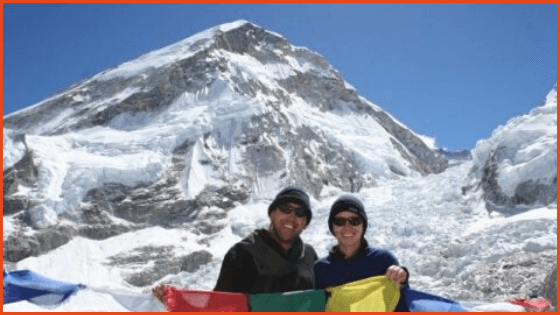
Tsurphu to Yangpachen Trek is another popular and challenging trek near Lhasa in Tibet. It is an excellent trek for those who want to get a close look at the Tibetan herders and their semi-nomadic lifestyle. The trek covers a distance of around 40 km and takes 3 days to complete.
Tsurphu to Yangpachen trek begins at Tsurphu Monastery. This rugged walk crosses several alpine valleys before emerging into the broad and windswept Yangpachen valley. This is a high elevation trek exceeding 4400m for the entire duration and a maximum elevation of 5300m at the Lasar-la. Combining alpine tundra and sweeping mountain panoramas with visits to monasteries and a nunnery, this trek nicely balances cultural and wilderness activities.
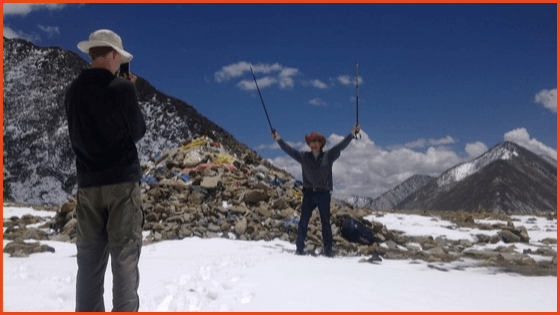
Other popular Tibet trekking routes in Tibet:
- Tibet Mount Everest Base Camp Trek - Trek from Old Tingri to Rongbuk in 3 Days covering a distance of 60km.
- Tibet Trekking from Shalu Monastery to Nartang Monastery - Short 2 Day Trekking near Shigatse
- Tibet Gama Valley Trekking - 8 Days Trekking in the Eastern Slope of Mt. Everest
- Tibet Everest Advanced Base Camp Trek (ABC Trek) - 5/6 days Trekking to Everest Advanced Base Camp from Rongbuk - Need special climbing permit for this Trek
- The Kharta Valley & Everest Kangshung Face Trek - 8/9 day trek from Kharta valley to Everest Kangshung Face through Gama Valley
Other trekking available in Greater Tibet including Tibetan areas in Qinghai & Sichuan:
- Yala Snow Mountain and Siguniang Valley trekking in Sichuan
- Minya Konka Trekking in Sichuan
- Amnye Machen trekking in Qinghai
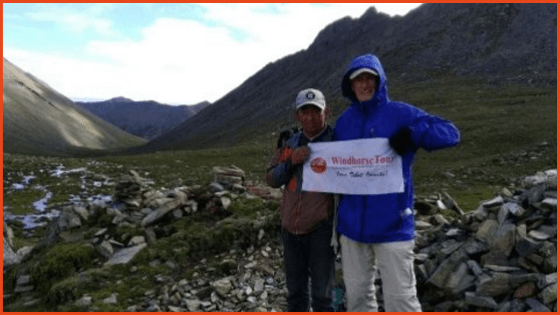
A trekking in Tibet requires good physical condition, well preparation and strong perseverance.
To help you make the most of your journey, here is a list of insider tips for trekking in Tibet:
Acclimatize properly: Due to Tibet's high altitude, it's essential to acclimatize before starting your trek. Spend a few days in Lhasa or another high-altitude place to allow your body to adjust to the thin air.
Choose the right season: The best time to trek in Tibet is from May to early October when the weather is relatively stable, and the temperatures are more comfortable. Monsoon season, from June to August, can be wet, but it's still a viable option if you're prepared for occasional rain.
Stay hydrated and eat well: High altitudes can cause dehydration, so be sure to drink plenty of water throughout your trek. Also, maintain a balanced diet to keep your energy levels high.
Pack smart: Bring layers of clothing to adjust to fluctuating temperatures and a reliable pair of hiking boots. Don't forget essential items like sunscreen, sunglasses, a hat, a first aid kit, medicines prescribed by your doctor and an oxygen bottle for emergencies.
Be prepared for the unexpected: Weather conditions can change rapidly, and trails can be more challenging than expected. Embrace the adventure and be open to adapting your plans as needed.
Purchase travel insurance: Accidents can happen, and it's wise to have travel insurance that covers medical expenses, evacuation, and trip cancellation or interruption.
Learn some basic Tibetan phrases: Learning a few simple phrases in the local language can go a long way in making connections with the people you encounter during your trek.
By keeping these insider tips in mind, you'll be well-equipped to make your trekking experience in Tibet a memorable and rewarding one. Read more detailed information for How to plan a Trekking in Tibet
Porter service is an essential choice for any traveler with heavy luggage
Due to the high altitude in Tibet and challenging trails, it is recommended to hire a porter service. Many trekkers fail to reach their destination because of the weight of their baggage. Therefore, it is highly advisable to entrust your luggage to a porter service, which will load it onto yaks or horses and accompany you to the camp sites.
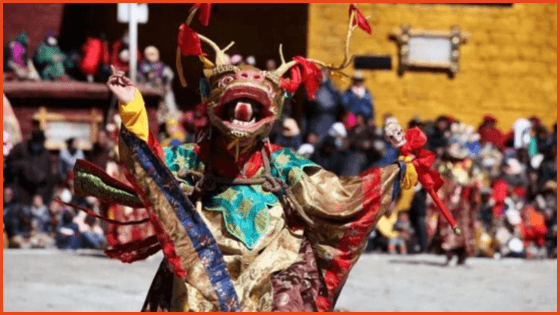
Travel to Tibet during the Tibetan Festivals
Tibetan festivals are a major attraction for many travelers who choose to visit Tibet. These vibrant celebrations offer visitors an unparalleled opportunity to experience and participate in the rich cultural heritage and ancient traditions of Tibet. By planning a trip to Tibet during one of its many festivals, travelers can immerse themselves in the local customs, observe unique ceremonies, and connect with the warm and hospitable Tibetan people.
Below are the three most significant and popular festivals in Tibet, offering exceptional opportunities to immerse oneself in Tibetan culture and traditions.
Tibetan New Year Festival (Losar)
Losar (Tibetan New Year) is the most significant festival in Tibet, marking the beginning of the Tibetan lunar calendar. It usually falls between late January and early March and lasts for 15 days, with the first three days being the most important. The festival offers a great opportunity to experience Tibetan culture, as locals engage in various rituals, prayers, and ceremonies. Traditional activities include house cleaning, hanging prayer flags, and making offerings to deities and ancestors. People also enjoy feasting on traditional Tibetan food and beverages, and participate in traditional music, dance, and other cultural performances. If you travel during the Tibetan New Year, you are likely to be invited by your Tibetan tour guide to their home, allowing you to have a unique experience of this cultural festival.
In 2025 Tibetan New Year will begin on February 28th in the Gregorian calendar.

Saga Dawa Festival
The Saga Dawa Festival is one of the most important religious festivals in Tibet, celebrating the birth, enlightenment, and passing of Buddha Shakyamuni. This month-long festival begins with the new moon of the fourth month and ends with the full moon the following month. In the Gregorian calendar, it typically falls between late May and June. The 15th day of the fourth month, known as Saga Dawa Düchen in Tibetan, is the holiest day of the year for Tibetan Buddhists. During Saga Dawa festival, practitioners focus on generosity, virtue, and compassion to accumulate greater merit. It is believed that the merits of one's actions are multiplied during this month and hugely increased on the 15th day.
The festival provides a unique opportunity to witness Tibetan Buddhist practices and rituals, such as circumambulating sacred sites like Potala Palace, Jokhang Temple, and Mount Kailash. Devotees engage in almsgiving, lighting butter lamps, abstaining from meat, and releasing captive animals to accumulate merit.
One of the best places to visit during Saga Dawa is Mount Kailash , which attracts thousands of pilgrims. A new flagpole is erected at the base of the mountain every year on the 15th day of the fourth Tibetan month. This is an excellent time to travel to Mount Kailash and join pilgrims in Kailash Kora, a holy circumambulation around the mountain.
If you cannot visit Mount Kailash during the festival, Lhasa is another great place to experience the festival atmosphere. Join pilgrims in circumambulating with locals, engage in almsgiving on Lingkor Road, or visit Tsurpu or Drigung Til monasteries to watch the famous Cham Dance.
In 2024, the Saga Dawa Festival will begin on May 23, according to the Gregorian calendar.

Shoton Festival
The Shoton Festival, also known as the Yogurt Festival, begins on the last day of the sixth month of the Tibetan calendar, usually falling in August or early September in Gregorian calendar. The week-long festival originally started as a religious observance, with people offering yogurt to monks who had completed their summer meditation retreat. Today, it has evolved into a broader cultural celebration featuring Tibetan opera, music, and dance performances. The festival begins with the unveiling of a giant thangka (Buddhist painting) at Drepung Monastery, followed by the opera performance at Norbulingka Summer Palace. If you happen to visit Lhasa during the Shoton Festival, join locals in the park for a picnic while watching opera.
In 2024 Shoton festival will begin on August 4. Check out our 2024 Shoton Festival tour .
Other popular festivals in Tibet are: The Butter Lamp Festival, Tashilhunpo Thankga Festival, Gyantse Horse Racing Festival, Nagqu Horse Racing Festival etc..
Popular Tibetan Festival in Greater Tibet (Sichuan/Qinghai/Yunnan): Horse Racing Festivals in Litang and Yushu, Shaman Festival in Rebkong in Qinghai, Mask Dance (Cham Dance) Festivals in Ganzi Tibetan area Kham, Amdo Tibetan Monlam festival.

Altitude sickness and how to stay healthy during your Tibet trip
Altitude sickness, also known as acute mountain sickness (AMS), is a common problem encountered by travelers at high altitudes, typically above 8,000 feet (2,438 meters). It arises when the body doesn't have enough time to adapt to the decreased oxygen levels and changes in air pressure.
Tibet's average altitude is 4,500 meters (14,760 ft) above sea level, with Lhasa situated at 3,650 meters (11,975 ft) above sea level. Due to the region's high elevations, it is common for travelers to experience moderate symptoms of altitude sickness during their first few days in Tibet. Common moderate symptoms include headache, dizziness, nausea, vomiting, fatigue, shortness of breath, and difficulty sleeping.
If you experience symptoms of altitude sickness, it's essential to take the necessary precautions to alleviate them. Make sure to rest, stay well-hydrated, consume healthy foods and carbohydrates, avoid rushing or engaging in strenuous activities, and most importantly, remain calm. Typically, the symptoms will subside within two or three days as your body acclimates to the high altitude.
Tips to reduce the risk of altitude sickness in your Tibet Travel
To minimize the risk of altitude sickness and stay healthy during your travel in Tibet, we suggest that you follow these tips:
- Gradual acclimatization: Acclimatize slowly by spending a few days in Lhasa or another moderately high-altitude place in Tibet before proceeding to higher elevations. Increase your sleeping altitude gradually, no more than 1,000 feet (300 meters) per day.
- Stay hydrated: Dehydration can worsen altitude sickness. Drink plenty of water and avoid alcohol, caffeine, and tobacco, which can contribute to dehydration.
- Eat a balanced diet: Consume meals rich in carbohydrates, as they provide energy and help your body adjust to the altitude. Avoid heavy and fatty foods that can be difficult to digest.
- Pace yourself: Avoid overexertion and intense physical activities, especially during the first few days of acclimatization. Slow down and listen to your body.
- Ascend and descend wisely: If you experience symptoms of altitude sickness, it's important not to ascend any further until you feel better. If your symptoms worsen, descend to a lower altitude immediately.
- Medication: Talk to your doctor about medications like acetazolamide (Diamox) that can help prevent or reduce the severity of altitude sickness. However, never rely solely on medication as a substitute for proper acclimatization.
- Recognize the symptoms: Common symptoms of altitude sickness include headache, dizziness, nausea, vomiting, fatigue, shortness of breath, and difficulty sleeping. If you notice any of these symptoms, take appropriate action to prevent the condition from worsening.
- Oxygen supplementation: In some cases, using supplemental oxygen can help alleviate symptoms of altitude sickness. Consult with your tour guide or travel agency to determine if this is a viable option for you.
- Get travel insurance: Ensure you have travel insurance that covers medical emergencies and evacuation at high altitudes.
- Consult a healthcare professional: Before embarking on your travel to Tibet, talk to your doctor about your health and fitness level, and discuss any pre-existing medical conditions that might increase your risk of altitude sickness.
Who should not travel to Tibet?
Certain individuals may face increased health risks at high altitudes and should reconsider traveling to Tibet. These include people with pre-existing medical conditions such as heart disease, severe asthma, lung disease, uncontrolled hypertension, or sickle cell disease. Pregnant women, particularly in their third trimester, and individuals with a history of altitude sickness, HAPE, or HACE should exercise caution.
Additionally, young children, especially infants, elderly individuals with pre-existing medical conditions, and people with sleep apnea might be at risk. It is crucial to consult a healthcare professional before planning a trip to Tibet if you fall into any of these categories.

Accommodation in Tibet
Accommodation in Tibet varies from budget guesthouses to luxury hotels depending on locations. In the capital city Lhasa, you will find the best accommodations in Tibet, such as St. Regis Lhasa Resort and Lhasa Shangri-La Hotel. There are also other fine, featured Tibetan hotels with good locations, and if you have a tight budget, there are plenty of guesthouses available. In secondary cities and towns such as Shigatse and Bayi town in Nyingchi, options range from budget guesthouses to luxury hotels. In smaller towns like Gyantse, Tsedang, Sakya, and Darchen, expect more budget hotels and guesthouses. At Everest Base Camp, during the Mount Kailash tour, and when crossing the wilderness of Changthang Plateau, accommodations are quite basic and may involve shared rooms. Please note that accommodation standards in Tibet may differ from other parts of the world. For example, a four-star hotel in Shigatse cannot be compared to a four-star hotel in Beijing, as there is a massive difference in the amenities that both star-rated hotels can offer.
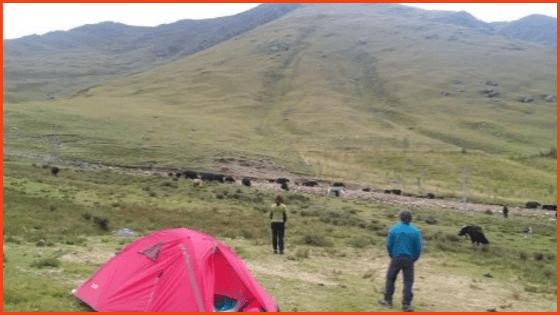
Accommodation during Tibet trekking
During the trekking in Tibet, accommodation options are generally more basic, ranging from tent camps to monastery guesthouses and home stays. Tent camps are required for most of Tibet trekking tours, and your travel agency will usually provide tents and sleeping pads. Basic monastery guesthouses are available at Mount Kailash Kora. In some remote areas, home stays with local families offer an authentic cultural experience, but amenities are minimal. Be prepared for basic facilities, shared spaces, and limited services for your stay during the Tibet trekking. Essential items to pack for your Tibet trekking should include a high-quality sleeping bag, headlamp, personal hygiene items, and necessary medications.

Experiencing local cuisine is essential when traveling to Tibet, as it reflects the Tibet’s culture, history, and traditions. Traditional Tibetan food primarily consists of barley and yak products, the most common Tibetan food includes Tsampa (roasted barley flour, yak butter, and tea mixed into a dough), Momos (steamed dumplings filled with meat or vegetables), and Thugpa (a noodle stew with meat and/or vegetables). Tsampa is the staple food of Tibetan people – ask your guide to show you how Tsampa is mixed with tea in a bowl. Momos are highly addictive, and Thugpa is an excellent comfort food. Check with your guide for the fresh Tibetan yogurt as it is made from yak milk and has superb taste. In Lhasa, you can find authentic Tibetan restaurants that serve excellent Tibetan food. Additionally, there are Nepalese, Indian, Chinese (mostly Sichuan food), and Western food options available in Lhasa.
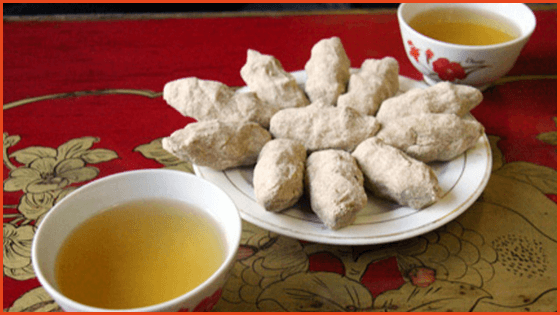
When traveling outside of Lhasa in Tibet, larger towns and cities such as Shigatse, Gyantse and Tsedang offer a variety of food choices, including Tibetan, Nepali, Chinese and Western cuisine. However, in smaller towns or villages, traditional Tibetan food may be less common, you will find more Chinese restaurants offering different types of cuisine, mainly Sichuan dishes. At Everest Base Camp, Rongbuk monastery guest house offers some simple food for dinner and breakfast which includes banana pancakes, toast, eggs and noodles, tea and coffee also available.
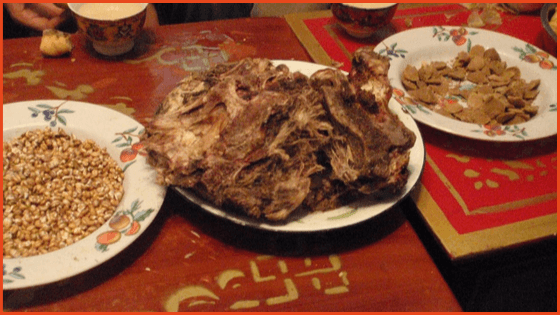
Favorite drink to the Tibetans is the butter tea, it is a salty blend of tea leaves, yak butter, milk, and salt. Butter tea is considered a staple drink in Tibet, especially in rural areas where the climate can be harsh. It is believed to provide warmth and energy, making it a perfect beverage for those who spend long hours working in the cold. In addition to its taste and nutritional benefits, butter tea is also an important part of Tibetan culture and hospitality, as it is often served to guests as a sign of respect and friendship. While it may not suit everyone's taste, it is customary for Tibetans to serve tea continuously as a sign of hospitality. You can sip the tea out of respect, request refills, or ask for hot water or sweet tea instead.
Tibetan sweet tea is another popular drink made from tea leaves, milk, sugar, and a variety of spices such as cinnamon, cardamom, and ginger. It is known for its warming properties and is a favorite drink among Tibetans, especially during the winter months.
In Lhasa, visitors can find several sweet tea houses that offer a great atmosphere of local culture. These tea houses are a popular spot for locals to relax, socialize, and enjoy a cup of sweet tea.
A trip to Tibet can be quite expensive due to its remote location and limited infrastructure. The cost of a Tibet tour is typically comprised of three main parts: arrival/departure transportation, ground tour costs in Tibet, and personal expenses while touring.
Arrival/departure transportation: The cost of transportation to Tibet varies greatly depending on the origin and mode of transportation. Round-trip flight tickets from mainland China to Lhasa range from USD 800-1000 per person, there are direct flights from Chengdu, Beijing, Chongqing and Xining to Lhasa. Discounted rates of 20-40% off may be available during shoulder season (Nov.-May). Round-trip train tickets from mainland China to Lhasa cost about USD 240-360 per person (varies by hard/soft sleeper), but during peak season, an additional USD 50-100 may be required to book the tickets. Round-trip flight tickets from Kathmandu to Lhasa costs about USD 800-1200 per person.
Tibet Ground Tour: The cost of a Tibet ground tour depends on factors such as tour type (group or private), length and region of travel, number of travelers, type of accommodation, and traveling season. WindhorseTour offers group Tibet tours lasting from 4 to 15 days, with a maximum of 12 travelers per group, based on tourists' standard accommodation. A group tour of 4 day Lhasa tour costs USD 460-570 per person (varied by shoulder / peak season), A group tour of 8 day Mount Everest Base Camp costs USD 840-1020 per person, A group tour of 7 day overland Lhasa to Kathmandu tour costs USD 960-1100 per person, A group tour of 15 day Mount Kailash tour costs USD 1820-2040 per person.
For a private Tibet tour, the tour cost needs to be calculated based on the number of travelers, the length and attractions that you want to visit, accommodation type and traveling season. We suggest you to contact us for a free quote if you plan to take a private Tibet tour .
Personal expense: When it comes to personal expenses while touring in Tibet, meals are typically not included in the ground tour cost, so you will be responsible for paying for your own meals during the tour. It is suggested to budget around USD 20-30 per person per day for meals, with the cost being slightly higher in remote areas. While tipping the driver/guide is not mandatory in Tibet, it is suggested to prepare a tip of around USD 15 per day based on your satisfaction with their service. It is recommended to tip at the end of the tour. Additionally, you may need to bring some cash for purchasing souvenirs, paying for laundry services, and other miscellaneous expenses.
China visa is not included in the ground Tibet tour and travelers need to apply for an individual Chinese visa in their home country prior to visiting Tibet. For those entering from Nepal, a group Chinese visa is required, which can cost between 80-200 USD per person depending on nationality.

What to pack for your Tibet Tour?
It is essential to know what to pack for your trip to Tibet , considering the high altitude and changing temperatures. You should pack all the necessary equipment, but avoid overpacking and only bring essential items. Additionally, it's important to pack all your needed medication. Above all, make sure not to forget your passport with efficient Chinese visa.
To make packing easier for you, we have compiled a list of recommended items that you should bring for your trip to Tibet.
Clothes and shoes
Even if you are traveling to Tibet in the summer, it's necessary to bring warm clothes due to the significant temperature differences between day and night.
It's advisable to dress in layers that can be easily added or removed as temperatures can fluctuate throughout the day in Tibet.
If you're only visiting Lhasa and nearby attractions for a few days, you don't need to pack any specific clothing, but do add warmer clothes to your standard travel wardrobe. A windbreaker is also advisable throughout the year.
Below is a list of items to pack if your tour includes an overland trip to Tibet but not for trekking.
- A down coat for those who are traveling to areas such as Mt. Kailash, Everest Base Camp or crossing the wilderness of Changthang Plateau.
- Rain gear is advisable to pack every traveler who is going to Tibet.
- T-shirts, both long and short sleeves
- 2 or 3 sweaters are enough
- Windproof pants: 3-4 water and windproof pants prepared in advance is no doubt the smartest choice.
- Underwear. Make sure that you are wearing comfortable underwear, especially if you are trekking. Your underwear should be woolen, not cotton.
- Woolen or polypropylene socks
- Comfortable hiking boots and shoes are required (you don’t need to wear hiking boots on overland journeys).

Personal Hygiene and Toiletry Items
This is the list of personal hygiene and toiletry items that you should pack for your trip to Tibet.
- Sunscreen, with SPF 35 or higher, because of the high altitude the Ultraviolet rains are very high
- anti-bacterial hand sanitizer
- small hand-held mirror (optional)
- feminine products
- shaving products
- travel size shampoo and soap
- toothbrush and toothpaste
- toilet paper (toilet paper not provided in many public toilets)
- band-aids and moleskin for blisters
Personal Accessories you must have for your trip:
These are the items that you should also pack, some of them are optional
- Sunglasses with UV protection are must,
- Small towel,
- A water bottle,
- One small bag for dirty clothes.
Optional Accessories
- iPod/iPad/Kindle or your smartphone for entertainment
- batteries for personal items (camera, flashlight, etc.)
- plenty of memory cards for your camera
- an extra copy of your passport and Chinese visa
- Snacks such as protein bars, chocolate, dried fruit or other snacks of your choice
- electric outlet adapters for Tibet

- Diamox to prevent altitude sickness,
- Aspirin, Diphenoxylate, and Prochlorperazine- medicine for cold, headache, stomachache, diarrhea, nausea, insect bite, etc.
- Multivitamins,
- Tylenol or Advil for a headache,
- medicine if you are prone to motion sickness,
- antibiotic ointment for minor cuts or blisters.
First Aid Kit

Your First Aid Kit should include:
- Band-aids or other wound dressings,
- Bandaids for the occasional blister from long walks,
- Alcohol swabs,
- Hydrogen peroxide,
- Cotton swabs,
- Cotton bandages,
- Bandage tape,
- Ace bandage for the twisted ankle that might occur while hiking,
- Small scissors.
Other Practical Things to Know About Tibet
Other practical things to know about Tibet before traveling include the currency used in Tibet, shopping options available in Tibet, and internet access in Tibet.
Currency in Tibet Tibet uses the Chinese Yuan (CNY) or RenMinBi (RMB), the same as in China. It's advisable to exchange currency at the Bank of China since dollars are not accepted in shops. There are limited ATMs in Tibet, so it's best to carry some cash.

If you're traveling to Tibet, don't miss the chance to experience the unique shopping opportunities there! Barkhor Street around Jokhang Temple and the markets nearby offer a wide range of items that you won't find elsewhere, such as beautiful handicrafts, carpets, religious paintings (known as Thangkas), prayer wheels, and incense. Handmade Tibetan jewelry, wood carvings, and pottery make fantastic souvenirs to bring back home, while the intricate designs and colors of Tibetan carpets are sure to impress. Thangkas, which depict Buddhist deities, and prayer wheels filled with mantras are fascinating and meaningful items that you can take with you to remember your trip. Don't forget to haggle with the vendors to get a good deal, but also make sure that any items you purchase comply with your home country's customs regulations.

Internet Access & Wifi in Tibet
The internet is generally available in most places in Tibet, except for remote areas such as during trekking days. In bigger cities and towns such as Lhasa and Shigatse, most hotels and cafes offer free Wi-Fi, but the connection can be slow and intermittent. It's best to activate your phone roaming service before departing for your Tibet tour. When you arrive in Tibet, you can connect to the local network and use roaming service to make phone calls, send text messages, and access the internet when there is a network available. Another good option is to purchase a local SIM card to have internet access on your phone in a cheaper way.
If you want to use social media platforms like Facebook, Twitter, or Instagram, you will need a Virtual Private Network (VPN). Many travelers can't even log in to their Gmail accounts without a VPN.
Things to Do and Not to Do in Tibet
It is important to know how to visit Tibet without offending the Tibetan Culture and customs. Tibetans have unique traditions that must be observed by travelers. Therefore, it's crucial to know what to do and what not to do during your journey in this incredible region. Here are some tips to help you avoid offending the Tibetan culture:
When visiting the Monasteries
- Wear appropriate clothing.
- Walk clockwise around the monastery.
- Be quiet in the monastery.
- Do not take photos of statues of Buddha.
- Do not smoke.
- Do not touch the books of scriptures or statues of deities.
Other Tips to Remember:
Don't take photos of Tibetan people without permission.
- Don't clap your hands in public; it's considered impolite.
- Don't spit in front of or behind others; it's also impolite.
- Don't touch the head of Tibetan people, not even on a child's head.
- Keep quiet at the top of the mountains. Tibetans believe that loud noise brings heavy snow, storms, or hail.
- When offered a yak tea, receive the drink with both hands.
- Tibetans don't eat the meat of donkeys, horses, and dogs, and tourists should avoid doing so as well.
Download your Tibet travel checklist
Planning for your next Tibet Travel adventure is easy with our Tibet Travel Checklist. Simply download the checklist and go through everything to ensure that you are fully prepared for your trip like no other.
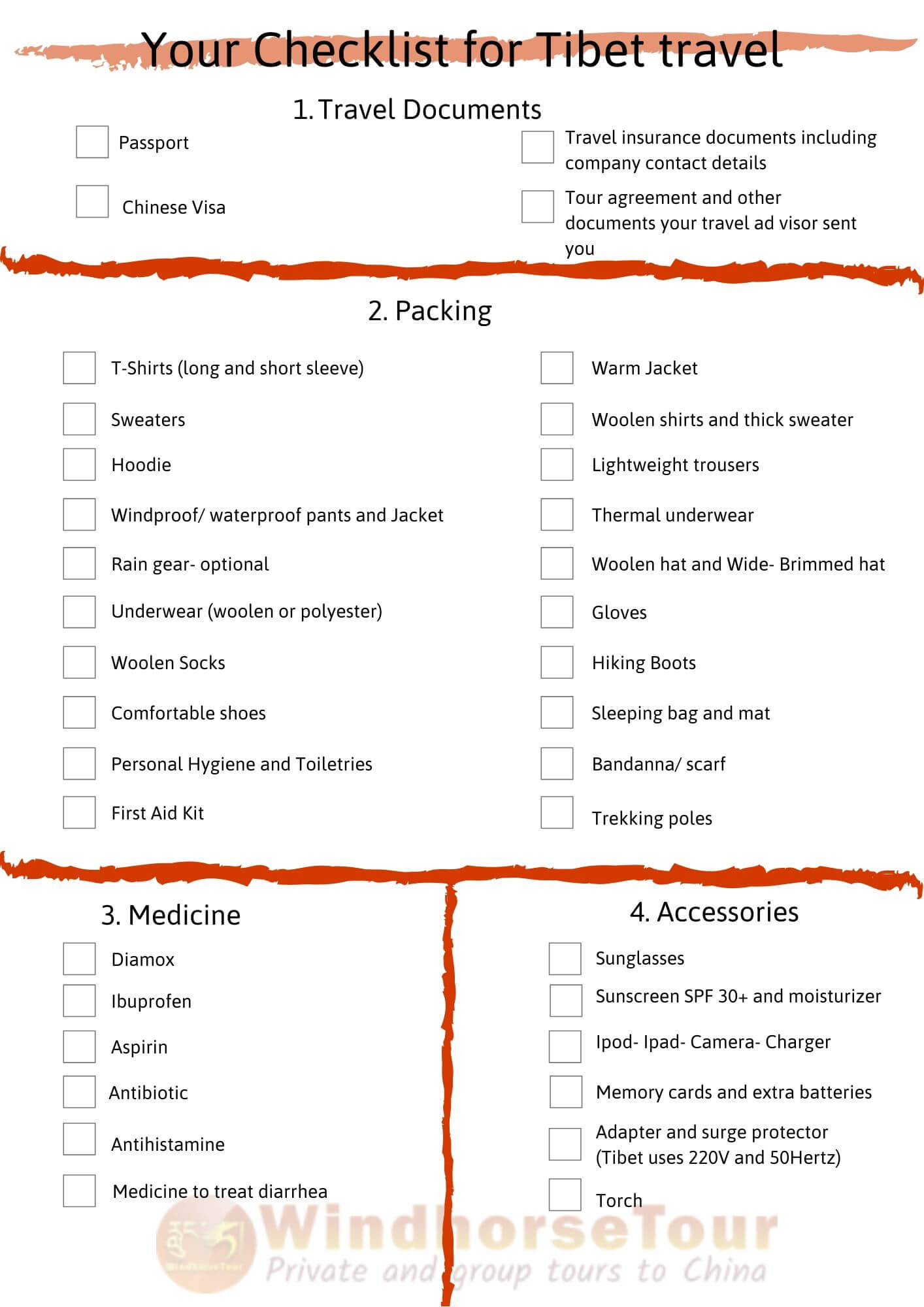
Related tours
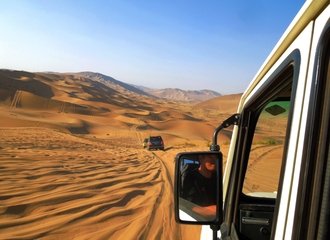
5 days Zhangye Danxia and Badain Jaran Desert
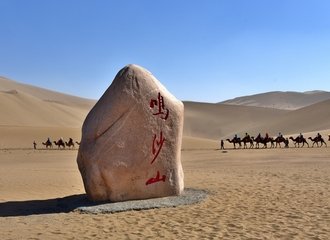
10 days China Silk Road from Urumqi to Xining Qinghai Lake
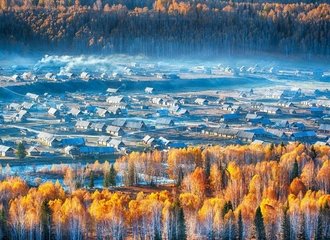
14 days China Silk Road and Northern Xinjiang Kanas Lake Tour
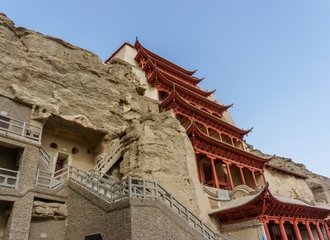
6 days Silk Road tour from Urumqi to Dunhuang
I want details
In reply to I want details by Bonnie Holubetz (not verified)
Hello Bonnie,
Tashi Delek!
Thank you for reaching out! I'm excited to assist you as your trip advisor. I've just sent some essential information to help with your Tibet trip planning, please review it at your convenience.
If you have any questions, feel free to contact me anytime.
Best regards, Yuki
I shall be looking forward to visit Tibet in the month of either May or September. Kindly do share the best itinerary for the same. I am from India
In reply to I shall be looking forward… by Narendra Lamba (not verified)
Hi Narendra,
Thank you for your inquiry. This is Zoe from Windhorse Tour responding to your email.
I have already sent you the email with detailed itinerary and quotation based on your inquiry, please kindly go through it and feel free to let me know any question you may have.
I am looking forward to hearing from you soon.
Best regards,

- Travelogues
- Travel Agent Cooperation

Most Searched Tibet 2024
How to Get a Tibet Travel Permit?
How to Visit Tibet in 2024/2025?
When is the Best Time to Visit Tibet?
Tibet Nepal Bhutan Tours
Most Popular Tibet Tour Packages
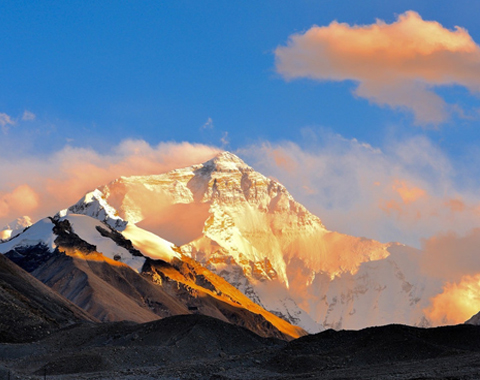
8 Days Lhasa to Everest Base Camp Small Group Tour
Lhasa - Gyantse - Shigatse - Everest Base Camp - Shigatse - Lhasa
From USD949 p.p
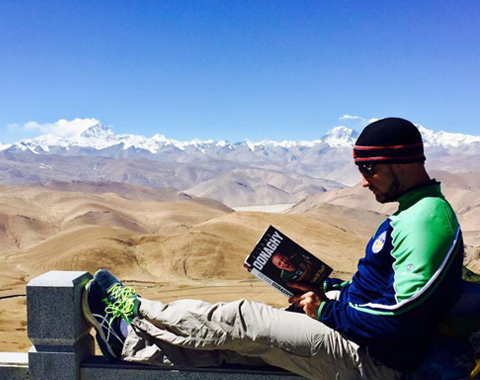
7 Days Lhasa to Kathmandu Overland Small Group Tour
Lhasa - Gyantse - Shigatse - Everest Base Camp - Gyirong - Kathmandu
From USD989 p.p
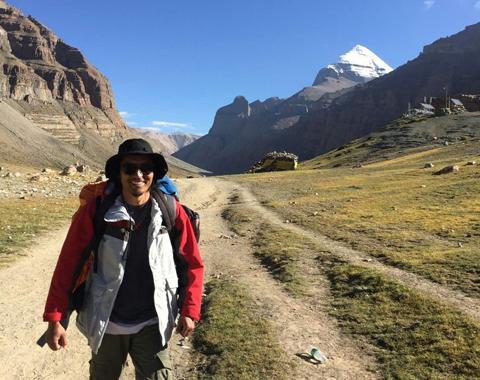
15 Days Kailash and Manasarovar Tour
Lhasa - Gyantse - Shigatse - E.B.C - Saga - Kailash Trek - Darchen - Lake Manasarovar - Saga - Gyirong - Tingri - Lhasa
From USD2069 p.p
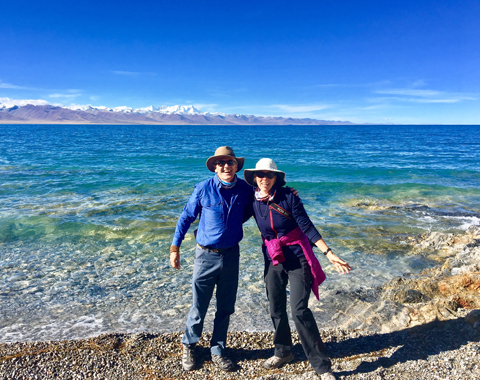
10 Days Lhasa to EBC and Namtso Lake Small Group Tour
Lhasa - Gyantse - Shigatse - EBC - Shigatse - Lhasa - Namtso Lake - Damxung - Lhasa
From USD1299 p.p
View All Group Tour
.jpg)
Tibet Winter Tour
Tibet is peaceful in winter, with local traditions at every turn;
Lhasa and Everest Base Camp are not cold at all in winter, with average temperature around 5℃.
Welcome to our sacred land this winter
Lowest Price: SAVE UP TO 20%

Tibet Tourism 2024/2025: Have to Know These 12 Things
Offering sacred mountains, holy lakes, endless grasslands, beautiful temples, and devout Buddhists, Tibet is a dreamland on many people's travel lists.
Before you start the plan to travel Tibet, we would like to share with you some important facts you have to know about Tibet tourism in this article.

1. Have to know that it's not able to travel to Tibet in March
The first thing you have to know about Tibet tourism is that normally, Tibet is closed to foreign tourists every March, sometimes in February, as all Tibetans at this time are celebrating the Tibetan New Year , also known as Tibetan Losar.
This is when all Tibetan travel agencies suspend their business. Most attractions are under maintenance. Permits you need to tour Tibet can’t be obtained because all staffs are on holiday. As April comes, the local travel agencies will start to operate Tibet tours again and you can plan your journey.
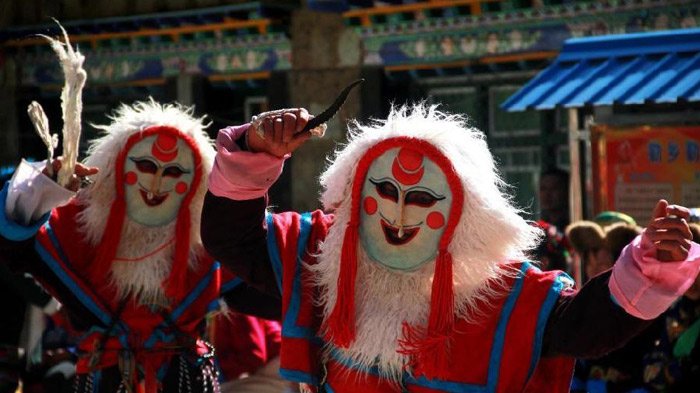
2. Have to know that you will need a Tibet Travel Permit
To tour Tibet, all foreign visitors need a Tibet Travel Permit . This permit can only be applied through an authorized travel agency in Lhasa. You need to find a local travel agency like Tibet Vista to help you obtain it.
The permit will be checked before you board a flight or train to Tibet , and when you travel outside the city of Lhasa. Sometimes, you will be required to present it before entering an attraction.
3. Have to know that you can't travel to Tibet alone
For foreign tourists, independent travel to Tibet is not allowed . You need to travel in a group and during your whole trip in Tibet, you need to be accompanied by a local tour guide.
For those who prefer to travel “alone” in Tibet, the best solution is to join in a private tour, with only your guide accompanied. However, the price will be higher because no one will share your expenses during the tour.
>>Get the most popular Tibet small group tour packages here .
4. Have to know that you're going to the high altitude place
With an average elevation of over 4,500 meters, Tibet is a place of high elevation and altitude sickness is common here. The best way to prevent altitude sickness is to avoid rapid ascents to high altitudes.
Taking a train to Tibet is a good choice because acclimatization to high altitudes may happen gradually en route. After arrival, we advise you to take a good rest at the hotel on the first day. If you fly into Lhasa, relax for at least three days.
For tourists who have problems with the heart, cerebral vessels, or lungs, etc., it is best to consult the advice of your doctor.
5. Have to know that you're going to visit the Potala Palace (local taboos)
Buddhist monastery is the primary seat for the preservation and inheritance of Tibetan culture . To show your respect to the local culture, there are some attentions to know when you visit their temples.
When you enter any temples, take off your hat or sunglasses. Don’t point your fingers at the statues. Photography is forbidden inside the palace, but it is allowed outside. Smoking is prohibited and cigarettes, as well as lighters, are not allowed to be taken into Tibet temples.
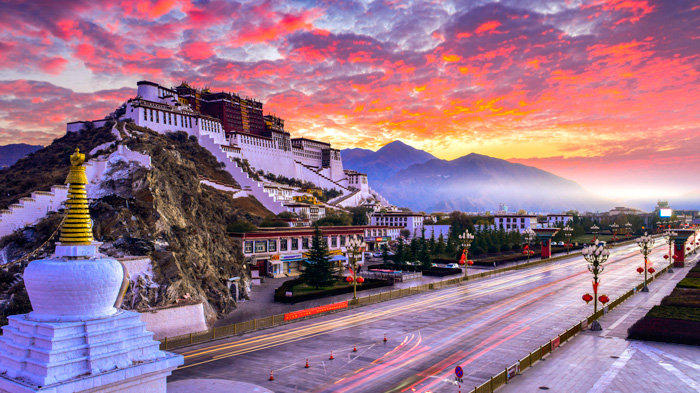
6. Have to know there's road speed control, so you will have a slow and long drive
Know that there is road speed control in Tibet , even on highways. The fastest speed on the road is 60 kph (40 mph). When driving through villages, the speed has to be less than 30 kph (20 mph).
Therefore, you need to be prepared to overcome the slow and long ride while getting around Tibet. For example, it takes 5 to 6 hours to drive the distance of 270-kilometer between Shigatse to Lhasa.
7. Have to know the local conditions of toilet and hotel are different from where you’re from
In Tibet, you can’t expect the same sanitary condition as that in western countries. Usually, the starred hotels in major cities like Lhasa and Shigatse offer considerate services, comfortable beds, and private bathrooms with western-style toilets. This may make you feel at home.
In remote areas of Tibet, there are only Tibetan-style hotels and guest houses. No private bathrooms are provided and you need to get used to the squat toilets. But we promise to always select the hotels and guesthouses that can offer better conditions.
When out of hotels or guest houses, you need to use the local public toilets. Just a reminder, many public toilets may have no separate doors. Hope it would not be a big headache for you.
8. Have to know that Lhasa has been an international city
As the spiritual, political, and economic center of Tibet, Lhasa draws a large number of international tourists and pilgrims every year. And over the years, Lhasa has become an international city .
Many international hotel brands have entered and stationed in Lhasa, for example, the Shangri-La Hotel, St. Regis Lhasa Resort, InterContinental Lhasa Paradise, Holiday Inn Express Lhasa Potala Palace, etc.
Various diet options are available in Lhasa , ranging from Tibetan food to traditional Chinese cuisine, western food, Nepal and Indian dishes, etc, which can satisfy different tastes of visitors from all directions.
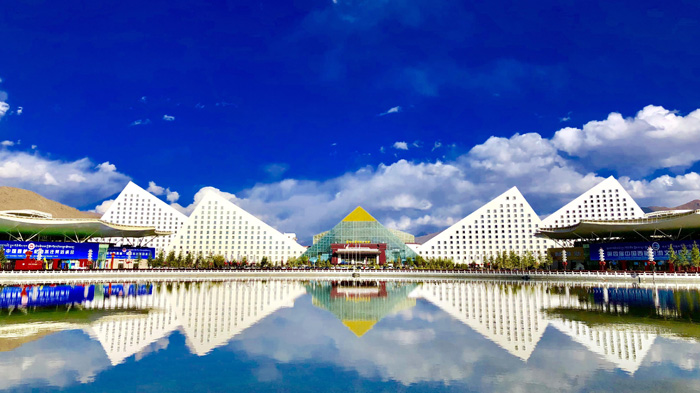
9. Have to know that you can only enter Tibet from the Mainland of China and Nepal
The Mainland of China and Nepal are the only two gateways to enter Tibet.
For visitors who enter Tibet from the mainland of China , you can fly or take a train to Tibet. Direct flights can be taken in Beijing, Xi'an, Chongqing, Chengdu, and Kunming. Many of our guests choose to go to Tibet by train because the scenery along the Qinghai-Tibet railway is breathtaking.
Nepal borders Tibet and offers direct flights from Kathmandu to Lhasa . Alternatively, you can experience an overland tour from Kathmandu to Lhasa . For Tibet entry from Nepal, China Group Visa is an added document. We can help you to handle it.
10. Have to know that you can not visit everywhere of Tibet
Pay much attention that not all attractions are open to foreign tourists , including Yadong County in Shigatse, Pangong Lake in Ngari, Yarlung Tsangpo Grand Canyon, and Nanyi Valley in Nyingchi, Tsonag County and Lhamo La-tso in Shannan, and the whole region of Qamdo.
11. Have to know that journalists and diplomats are not allowed to travel Tibet with a travel agency
Foreign journalists and diplomats are not allowed to enter Tibet as tourists. No travel agency is able to take you to Tibet. If you do want to visit Tibet, you must be approved by the China Ministry of Foreign Affairs . It is recommended to ask for help from the government agencies of your home country.
12. Have to know that there is no age limit to visit Tibet
Basically, there is no age limit to visit Tibet . Tibet is fine for children or the elders to visit. The youngest visitor who travels with us is only 1 year old and our oldest guest has an old age of 89!
Just remember that before departure, consult your family doctor that whether your body is suitable for the unique climate in Tibet. If your doctor said yes, you would be fine here. On arrival, make sure you all get enough rest to acclimate to the high altitude and then start your adventure in Tibet.
Hope the above-mentioned 12 facts about Tibet tourism can be helpful for you to get a better acquaintance with Tibet.
If you have any further questions about Tibet, please feel free to tell us. We have been engaged in tourism of Tibet for many years and we know every corner of Tibet. Come on and travel with Tibet Vista !

About the Author - Master Kungga Dundruk
Kungga Dundruk, often respectfully referred to as “Manager Kunga”, is the most revered and legendary Tibetan guide in our team.
Currently working as a customer service manager in Lhasa, Kunga used to study business overseas and got his Bachelor of Business in Nepal and India before moving back to his homeland. With pure passion for life and unlimited love for Tibet, Kunga started his guide career as early as 1997.
As a legendary Tibetan guide with 22 years of guide experience, Kunga was awarded the Gold Medalist of China’s Best Tour Guide in 2019, marking the pinnacle of his career. Today, Kunga loves sharing his wealth of Tibetan knowledge through travel articles and stands ready to offer prompt support whenever our guests need help in Lhasa.
https://plus.google.com/+Kunga-TibetVista
Read all my articles about Tibet travel
Related Articles & Posts
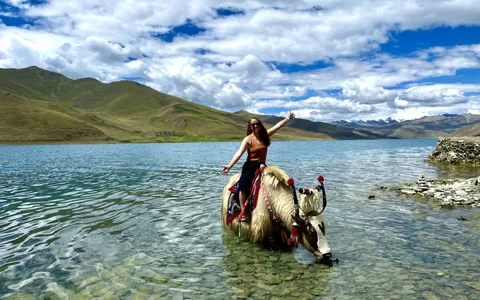
Is it safe to travel to Tibet? It is very safe to travel to Tibet. There are few things in Tibet that are really dangero ...
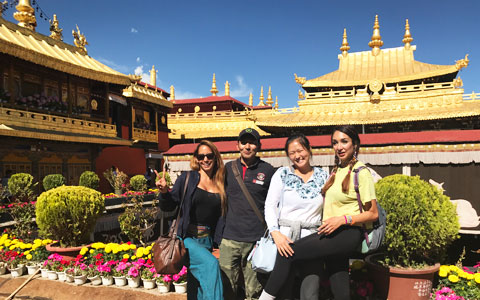
Before visiting Tibet, our travel experts would like to share some Tibet tour information with you. The following 100 fa ...
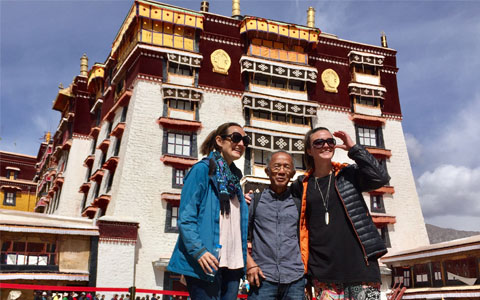
Considering a trip to Tibet or gathering more information for upcoming Tibet tours? Here we’ve put together some of the ...
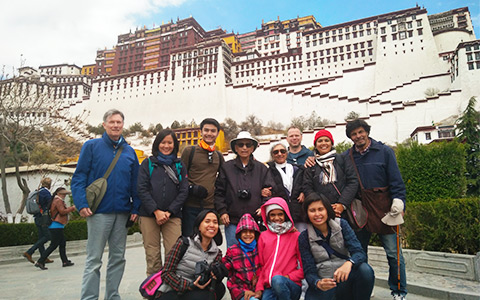
As it is not very easy to get to Tibet for foreign travellers, you shouldn't miss the most wonderful sights in Tibet, no ...
8 Days Lhasa to Everest Base Camp Small Group Tour: Marvel at Mt.Everest Real Close from 4 Different Viewing Platforms
15 Days Kailash and Manasarovar Small Group Tour: A pilgrim’s final fantasy and the greatest overland trip in Tibet.
10 Days Lhasa to Everest Base Camp and Namtso Lake Small Group Tour
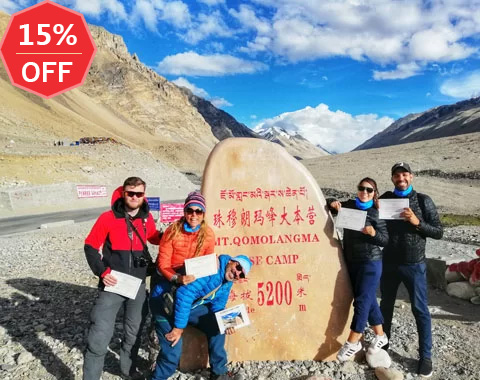
8 Days Driving Across Himalaya Overland Adventure from Kathmandu to Lhasa
Kathmandu - Gyirong - Everest Base Camp - Tingri - Shigatse - Gyantse - Lhasa

4 Days Lhasa Impression Small Group Tour: Explore the Heart of Tibet and Mingle with the Locals
7 Days Lhasa to Kathmandu Overland Small Group Tour: Traverse from the North Side to the South Side of Mt.Everest for the Best of the Himalayas
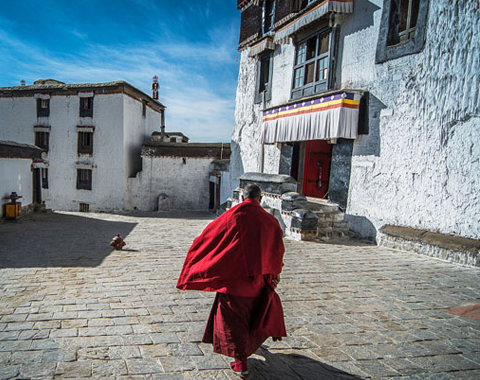
6 Days Central Tibet Culture Small Group Tour: Explore Tibet's religion, cultural gems, and captivating landscapes.
Lhasa - Gyantse - Shigatse- Lhasa

13 Day Lhasa, Mt. Everest, Mt. Kailash, Lake Manasarovar and Kathmandu Adventure Tour
Lhasa - Gyantse - Shigatse - EBC - Saga - Darchen - Kailash Trek - Darchen - Saga - Gyirong - Kathmandu
0 Comment ON "Tibet Tourism 2024/2025: Have to Know These 12 Things"
Check All Tibet Travel FAQs Here
- WildChina’s Travelogue
- Bendi Stories
- The China Travel Podcast
- Search All Journeys
- Expert-led Journeys
- Small Group Tours
- Mainland China
- Day Experiences
- Beshan Website
- Education Programs
- Corporate Services
- Cultural Projects and Spaces
- How to Visit China in 2024
- WildChina Restaurant Guides
- A Guide to China’s Trains
- Digital Payments in China (Alipay and Weixin Pay)
- Travel Updates
- Booking Conditions
- Health and Safety
- Traveling to Tibet FAQ
- Your Pre-Departure Guide
- How Wild is WildChina?
- Award Winning Services
- Recognitions
- Our Leadership
- Our Designers
- Our Experts
- Work with Us
- Our Sustainability Position
- Plan your journey

Traveling to Tibet FAQs and Tips
What should I be aware of when going to the Tibetan Autonomous Region? See answers to our Traveling to Tibet FAQs and Tips.
(updated April, 2024)
- How do I get to Tibet?
Do I need a permit?
- If I’m already in China, how do I get a Tibet Travel Permit?
- How is the weather in the Tibetan Autonomous Region?
- Can I access internet in the Tibetan Autonomous Region?
- Is Tibet ever closed to foreign visitors?
- Is there a risk of high altitude sickness?
- Do I need vaccinations for traveling to Tibet?
- How are bathrooms in the Tibetan Autonomous Region?
- Have more questions?

How do I get to Tibet?
Tibet can only be accessed via mainland China or Nepal. We recommend entering through mainland China, as the Tibet Travel Permit can be applied for in advance if using this route. If you enter through Nepal, you must apply for a new Chinese visa in Kathmandu (if you already have a valid Chinese visa, it will not be accepted, and will be canceled in order to apply for the new one on-site in Kathmandu) before you can apply for Tibet Travel Permit.
When entering Tibet via mainland China, you have two options: flight or train.
There usually direct flight options from Beijing, Shanghai, Chongqing, Chengdu, Xi’an Kunming and Shangri-La. Flying is the quickest and most-direct option.
The train is an overnight journey from Xining to Lhasa and takes ~22 hours. This is a great option if you have more time, are interested in seeing the scenery along the Tibetan plateau, and seeking a slower acclimatization to the elevation.

You will need a Tibet Travel Permit in order to enter the region. WildChina will arrange this permit for you and send it to you before you fly to the Tibetan Autonomous Region, but please be aware that travel to and within TAR is subject to change with very little notice. In order to do this, you will need to first have a valid Chinese visa. Since the permit takes up to 14 days to process, please ensure you apply for your Chinese visa ahead of time so that it is ready at least 15 days before you intend to enter the Tibetan Autonomous Region.
We advise arranging a phone call with your travel designer before applying for your Chinese visa so we can explain in more detail what to expect and how best to apply.
Once you’ve received your Chinese tourist visa (L visa), we will require a scanned copy of the photo page of your passport and your Chinese visa page, in order to apply for your Tibet Travel Permit.
If traveling outside of Lhasa (still in Tibet) you will also require an Alien’s Travel Permit and Tibet Tourism Bureau Permit (TTB Permit). This will be arranged by WildChina and you will receive the permit once in Lhasa. The cost of these is already included in the land cost.
The Tibet Public Security Bureau requires that a detailed itinerary is submitted when applying for these documents and this itinerary must be followed precisely. As such, it is important to be aware that unplanned deviations from our itinerary are not usually possible.
When handling your Tibet Travel Permit, please take care, as there is a small (not-very-sticky) sticker, which renders the document valid. If this sticker fal ls off, the document is no longer considered valid and will be rejected by authorities.

If I’m already in China, how do I get a Tibet Travel Permit?
If you are working in China and hold a different type of visa than L (tourist), you will
need to provide both a scanned copy of the photo page of your passport and your Chinese visa page, as well as the below additional paperwork:
- Business (F) visa – a letter of recommendation from your company (with the official company seal).
- Work (Z) visa – a letter of recommendation from your company (with the official company seal) and a scanned copy of your work permit.
- Student (X) visa – a letter of recommendation from your school or university, with the school stamp (seal) and a scanned copy of the student ID card.
- Other Types – Diplomats, journalists, and government officials have separate requirements.
Please email us directly to inquire about getting a TTP for these visa types.

How is the weather in the Tibetan Autonomous Region?
Temperatures in the Tibetan Autonomous Region can drop dramatically in the evening. Remember to bring plenty of layers of warm clothing or, if you prefer to travel light, we also recommend purchasing warm clothing in Lhasa then donating the items to a local school/orphanage at the end of your trip!

Can I access internet in the Tibetan Autonomous Region?
Wifi is available in all hotels we use in the region, however it is relatively slow in some areas. 4G is not available, and if you use a VPN service, it may be slower than normal.

Is Tibet ever closed to foreign visitors?
Tibet is closed to foreign visitors during certain months of each year. Exact dates differ each year with little to no warning depending on current circumstances, but the Tibetan Autonomous Region continuously does not issue travel permits for the month of March.

Is there a risk of high altitude sickness?
Lhasa sits at an elevation of 3,656 meters (11,990 feet), and at this height, high-altitude sickness is a risk. High altitudes can make activities, and possibly sleep, more difficult and Acute Mountain Sickness (AMS) can result in headache, nausea, fatigue and loss of appetite.
We recommend visiting your physician to discuss your risk of Acute Mountain Sickness (AMS) 4-8 weeks before departure if you’re traveling in high altitude locations, mainly Xinjiang, Tibet and Yunnan. It is likely he/she will suggest taking Diamox (like with any medication, there are possible side effects, so be sure to ask your doctor about specific compatibility), starting 1 day before you reach the high altitude region and continuing while you ascend.
Once there, it’s important to drink plenty of water. WildChina itineraries are planned as such that you have plenty of time to adjust to the altitude and so you can fully enjoy your trip. In the unlikely event of serious altitude sickness, emergency evacuation measures will be taken.
Most luxury hotels in Lhasa provide a free oxygen lounge and a clinic to help with adjusting, and all WildChina guides and vehicles have emergency-use oxygen on-hand at all times.
If you suffer from high altitude sickness, your local guide and our staff will quickly help you to lower altitude and to the nearest hospital if needed. If you need to leave Tibet early due to altitude sickness, please contact your trip designer so they can assist with booking the earliest-possible departure flight.

Do I need vaccinations for traveling to Tibet?
We recommend visiting your personal physician or a travel clinic 4-8 weeks before departure for information regarding vaccinations. For your convenience when speaking to a doctor, we have included the most useful links regarding recommended immunizations prior to traveling in China.
Many immunizations require at least 10-14 days before becoming effective and should be obtained before you travel to China –especially if you plan to visit more remote, rural areas such as Tibet and Yunnan, or spend a lot of time outdoors.
Helpful resources:
- U.S. Centers for Disease Control and Prevention (CDC)
- Medical recommendations specific to travel in Tibet

How are bathrooms in the Tibetan Autonomous Region?
Hotel bathrooms are generally high standard with Western toilets. However, bathrooms in local restaurants or places of interest will be quite basic and at times, it may be more pleasant to avoid these toilets and use nature instead. As such, we recommend packing a small toilet kit to bring with you, including tissues, hand sanitizer, and wet wipes. Your guide will also have tissues on-hand for you if needed.

Have more questions?
For more information on travel to and around China, feel free to contact us at [email protected] to speak to one of our travel experts.
Ready to plan an unforgettable journey to Tibet?
Take a more profound look at spiritual life in Tibet. You’ll travel through its heart, touring in a loop from Lhasa, along the shores of Yamdrok Tso Lake, through rolling foothills, to Gyantse, Shigatse, and back. At each stop, an adventure, a new facet of Tibetan life to explore.
Travel to Tibet with WildChina
Related Journeys with WildChina

Soul of Tibet

Sho Dun Festival in Tibet

The Red Dragon and Lhasa

Expedition to Tibet’s West
More interesting reads.

We’re on hand to help you get the information you need about travel in China, whenever you need it. We’re not robots; we’re real people, travel designers here to help you.
As COVID-19 restrictions and regulations change, we want to make sure that you can travel in a safe and responsible way. Let us know your China travel questions and, within one business day, we’ll personally get in touch via email, phone call, or WeChat (whichever method you’d prefer) to help you answer it.
Beijing Address:
803 Oriental Place, 9 East Dongfang Rd, Chaoyang District, Beijing, 100027
Shanghai Address:
A12, 3rd Floor, SIP, No. 1318, North Sichuan Road, Hongkou District, Shanghai
Chengdu Address:
26th Floor, No. 1-2 Hangkong Road, Wuhou District, Chengdu, Sichuan
Yangshuo Address:
No. 26 Furong Road, Yangshuo, Guangxi
+86 10 6465 6602
+1 888 902 8808 (Toll Free)

IMAGES
VIDEO
COMMENTS
Tibet is now open for traveling. A Tibet Permit is a requirement for all foreign travelers entering Tibet, which is granted by the Tibet Travel Administration following a travel agency's application. Independent foreigners are unable to apply for an Entry Permit.
How to Travel Tibet. Tourism is highly restricted in Tibet and independent travel is not allowed. Foreign travelers need to prearrange a tour in order to obtain a Tibet Tourism Bureau (TTB) permit; only Chinese and Hongkong travelers are free to enter without a visa.
The guide to travel to Tibet: How to get the Tibet Permit, when to go to Tibet, where to go, how long to stay, what to bring and more
Yes, you can travel to Tibet in 2024. Tibet has officially reopened its borders to international travelers on April 7th 2023, including the Gyirong border between Tibet and Nepal. This is a wonderful opportunity for overseas visitors to explore the enchanting land of Tibet.
Knowing these 12 facts about Tibet tourism will help you plan a better Tibet trip in 2024/2025, including some travel restrictions and useful tips. With China Tourist Visa Resumed, Tibet Tours for All around the Globle are Available Right Now!
Do I need vaccinations for traveling to Tibet? We recommend visiting your personal physician or a travel clinic 4-8 weeks before departure for information regarding vaccinations. For your convenience when speaking to a doctor, we have included the most useful links regarding recommended immunizations prior to traveling in China.